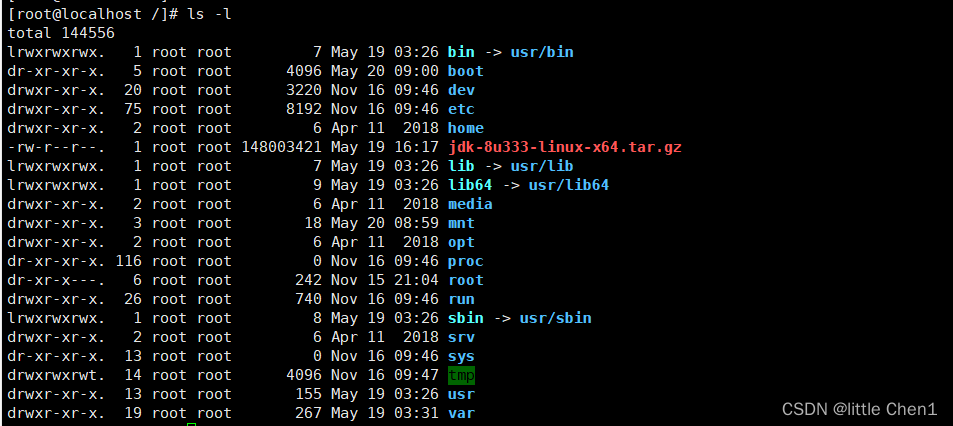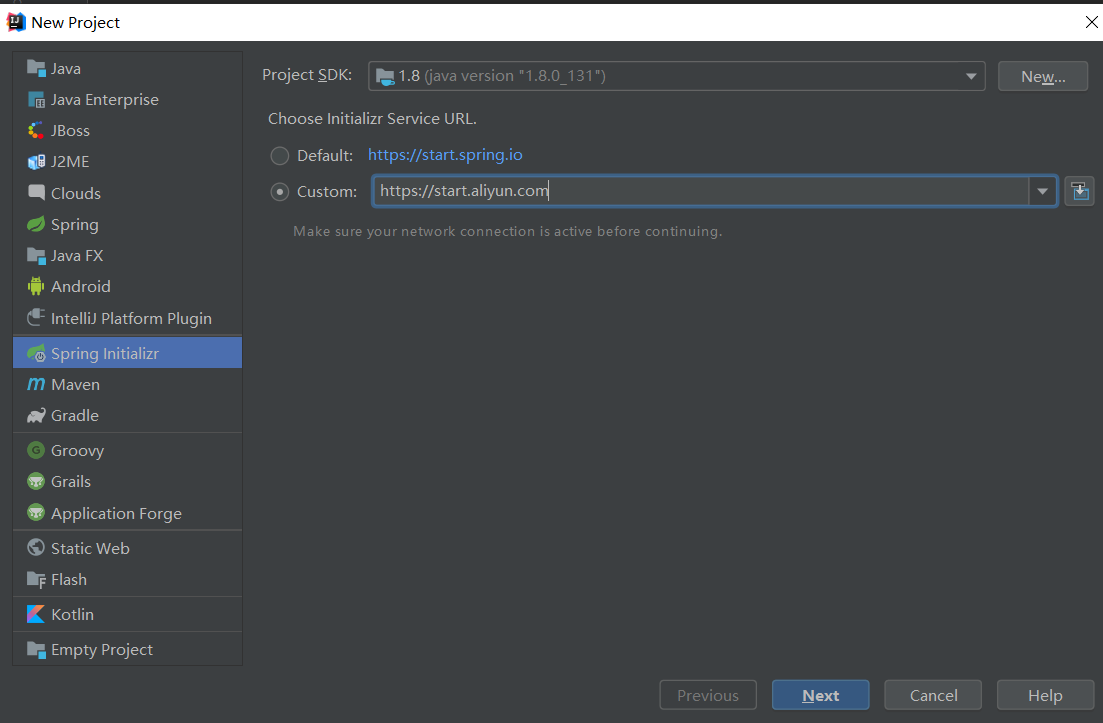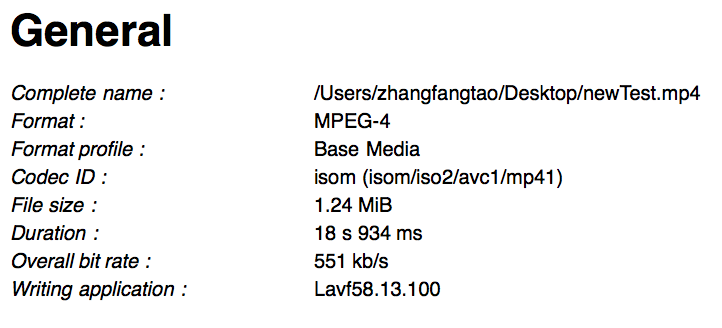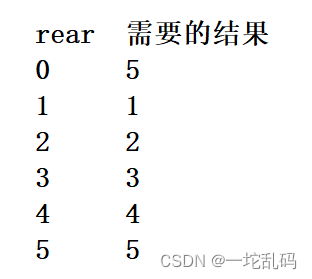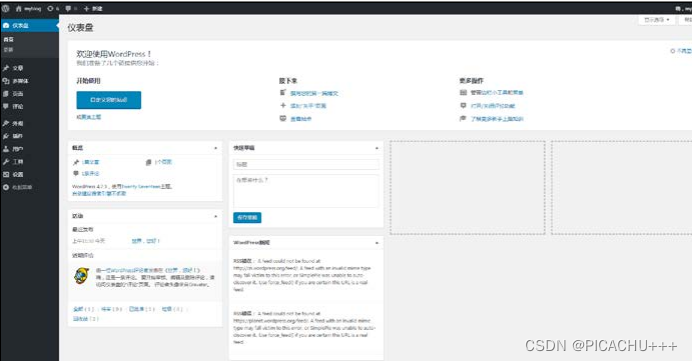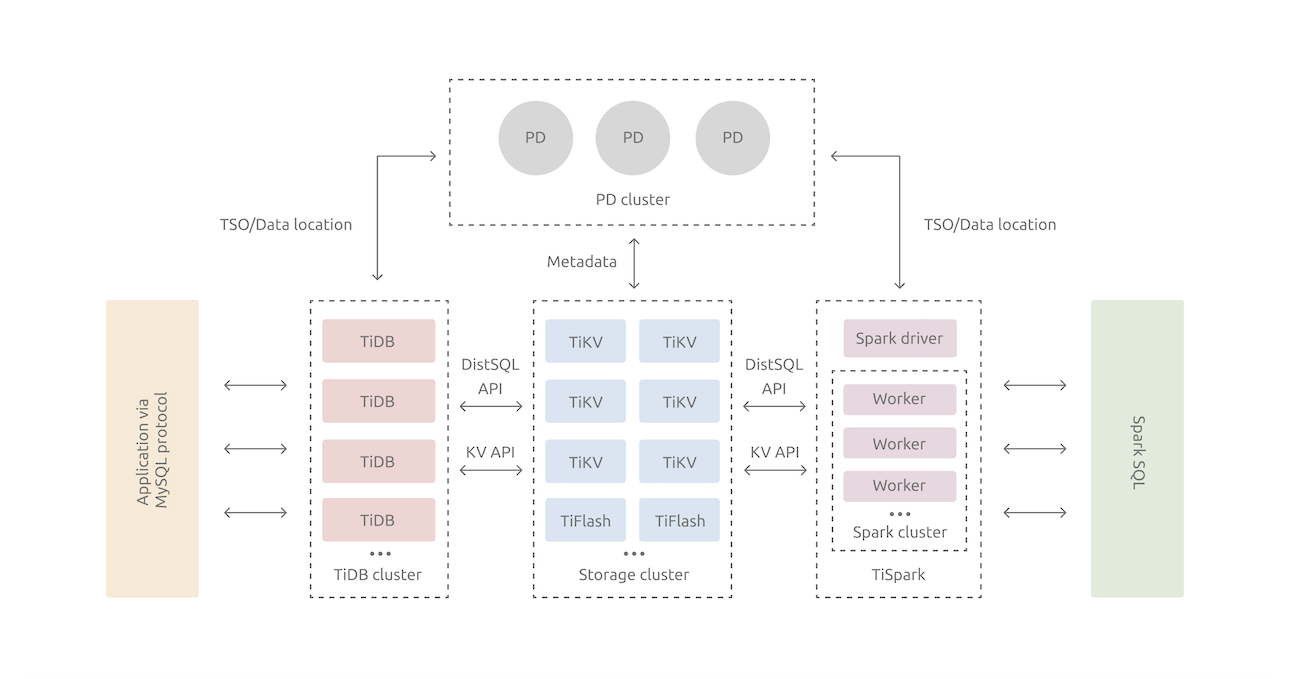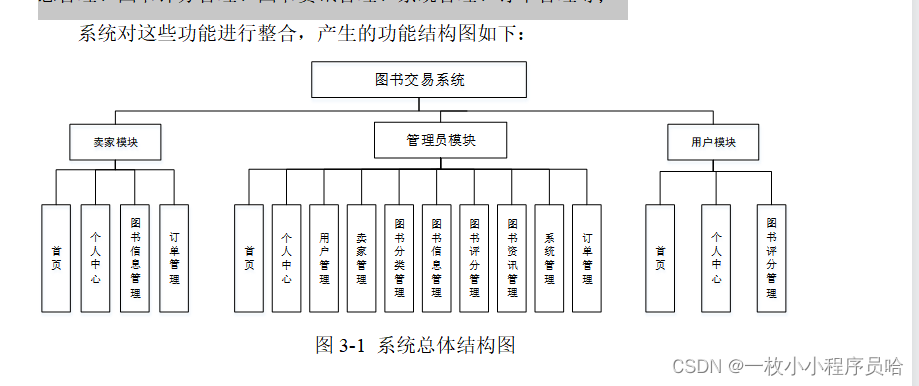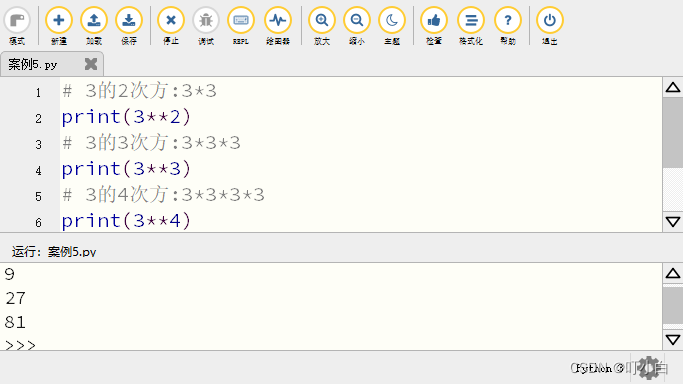上一篇博客 Tomcat 源码解析一请求处理的整体过程-黄泉天怒(上)
NonLoginAuthenticator
NonLoginAuthenticator并没有实现invoke()方法,而是由父类AuthenticatorBase实现了invoke()方法,AuthenticatorBase类关系如下。

先弄清楚NonLoginAuthenticator这个管道是在何时被加入到StandardContext的Pipeline里的呢? 在StandardPipeline的addValve()方法中打断点。

最终发现在configureStart()方法中调用了authenticatorConfig(),实现了向StandardContext的Pipeline中添加Valve。

大家可能感到迷惑,什么时候调用configureStart()方法呢?这个需要去看之前的Tomcat 源码解析一容器加载-大寂灭指 相关的三篇博客了。 这里就不深入,先进入authenticatorConfig()方法 。
/**
* Set up an Authenticator automatically if required, and one has not
* already been configured.
* 基于解析完Web容器,检测Web应用部署描述中使用的安全角色名,当发现使用示定义的角色时,提示警告将未定义的角色添加到Context 安全角色列表中。
*/
protected void authenticatorConfig() {
LoginConfig loginConfig = context.getLoginConfig();
if (loginConfig == null) {
// Need an authenticator to support HttpServletRequest.login()
loginConfig = DUMMY_LOGIN_CONFIG;
context.setLoginConfig(loginConfig);
}
// Has an authenticator been configured already?
if (context.getAuthenticator() != null)
return;
if (!(context instanceof ContainerBase)) {
return; // Cannot install a Valve even if it would be needed
}
// Has a Realm been configured for us to authenticate against?
if (context.getRealm() == null) {
log.error(sm.getString("contextConfig.missingRealm"));
ok = false;
return;
}
/*
* First check to see if there is a custom mapping for the login
* method. If so, use it. Otherwise, check if there is a mapping in
* org/apache/catalina/startup/Authenticators.properties.
*/
Valve authenticator = null;
if (customAuthenticators != null) {
authenticator = (Valve)
customAuthenticators.get(loginConfig.getAuthMethod());
}
// 当Context 需要进行安全认证但是没有指定具体的Authenticator时,根据服务器配置自动创建默认的实例。
if (authenticator == null) {
if (authenticators == null) {
log.error(sm.getString("contextConfig.authenticatorResources"));
ok = false;
return;
}
// Identify the class name of the Valve we should configure
String authenticatorName = null;
authenticatorName =
authenticators.getProperty(loginConfig.getAuthMethod());
if (authenticatorName == null) {
log.error(sm.getString("contextConfig.authenticatorMissing",
loginConfig.getAuthMethod()));
ok = false;
return;
}
// Instantiate and install an Authenticator of the requested class
try {
Class<?> authenticatorClass = Class.forName(authenticatorName);
authenticator = (Valve) authenticatorClass.newInstance();
} catch (Throwable t) {
ExceptionUtils.handleThrowable(t);
log.error(sm.getString(
"contextConfig.authenticatorInstantiate",
authenticatorName),
t);
ok = false;
}
}
if (authenticator != null && context instanceof ContainerBase) {
Pipeline pipeline = ((ContainerBase) context).getPipeline();
if (pipeline != null) {
((ContainerBase) context).getPipeline().addValve(authenticator);
if (log.isDebugEnabled()) {
log.debug(sm.getString(
"contextConfig.authenticatorConfigured",
loginConfig.getAuthMethod()));
}
}
}
}
想弄清楚上面代码,第一要看懂LoginConfig的由来,默认LoginConfig为protected static final LoginConfigDUMMY_LOGIN_CONFIG =
new LoginConfig(“NONE”, null, null, null); ,第二点明白authenticators属性什么时候赋值,赋的值是什么?请看ContextConfig的静态代码块。
static {
// Load our mapping properties for the standard authenticators
Properties props = new Properties();
InputStream is = null;
try {
is = ContextConfig.class.getClassLoader().getResourceAsStream(
"org/apache/catalina/startup/Authenticators.properties");
if (is != null) {
props.load(is);
}
} catch (IOException ioe) {
props = null;
} finally {
if (is != null) {
try {
is.close();
} catch (IOException e) {
}
}
}
authenticators = props;
// Load the list of JARS to skip
addJarsToSkip(Constants.DEFAULT_JARS_TO_SKIP);
addJarsToSkip(Constants.PLUGGABILITY_JARS_TO_SKIP);
}
authenticators属性来源于org/apache/catalina/startup/Authenticators.properties文件,而Authenticators.properties的文件内容为

此时再来看authenticatorConfig()方法就简单多了,默认情况下loginConfig的authMethod值为NONE,因此从authenticators获取到的配置类名为org.apache.catalina.authenticator.NonLoginAuthenticator,再用反射创建NonLoginAuthenticator对象,添加到StandardContext的Pipeline的Valve中。
public void invoke(Request request, Response response) throws IOException, ServletException {
if (log.isDebugEnabled()) {
log.debug("Security checking request " + request.getMethod() + " " +
request.getRequestURI());
}
LoginConfig config = this.context.getLoginConfig();
// Have we got a cached authenticated Principal to record?
if (cache) {
Principal principal = request.getUserPrincipal();
if (principal == null) {
Session session = request.getSessionInternal(false);
if (session != null) {
principal = session.getPrincipal();
if (principal != null) {
if (log.isDebugEnabled()) {
log.debug("We have cached auth type " + session.getAuthType() +
" for principal " + principal);
}
request.setAuthType(session.getAuthType());
request.setUserPrincipal(principal);
}
}
}
}
boolean authRequired = isContinuationRequired(request);
Realm realm = this.context.getRealm();
// Is this request URI subject to a security constraint?
SecurityConstraint[] constraints = realm.findSecurityConstraints(request, this.context);
if (constraints == null && !context.getPreemptiveAuthentication() && !authRequired) {
if (log.isDebugEnabled()) {
log.debug(" Not subject to any constraint");
}
getNext().invoke(request, response);
return;
}
// Make sure that constrained resources are not cached by web proxies
// or browsers as caching can provide a security hole
if (constraints != null && disableProxyCaching &&
!"POST".equalsIgnoreCase(request.getMethod())) {
if (securePagesWithPragma) {
// Note: These can cause problems with downloading files with IE
response.setHeader("Pragma", "No-cache");
response.setHeader("Cache-Control", "no-cache");
} else {
response.setHeader("Cache-Control", "private");
}
response.setHeader("Expires", DATE_ONE);
}
if (constraints != null) {
// Enforce any user data constraint for this security constraint
if (log.isDebugEnabled()) {
log.debug(" Calling hasUserDataPermission()");
}
if (!realm.hasUserDataPermission(request, response, constraints)) {
if (log.isDebugEnabled()) {
log.debug(" Failed hasUserDataPermission() test");
}
/*
* ASSERT: Authenticator already set the appropriate HTTP status
* code, so we do not have to do anything special
*/
return;
}
}
// Since authenticate modifies the response on failure,
// we have to check for allow-from-all first.
boolean hasAuthConstraint = false;
if (constraints != null) {
hasAuthConstraint = true;
for (int i = 0; i < constraints.length && hasAuthConstraint; i++) {
if (!constraints[i].getAuthConstraint()) {
hasAuthConstraint = false;
} else if (!constraints[i].getAllRoles()) {
String[] roles = constraints[i].findAuthRoles();
if (roles == null || roles.length == 0) {
hasAuthConstraint = false;
}
}
}
}
if (!authRequired && hasAuthConstraint) {
authRequired = true;
}
if (!authRequired && context.getPreemptiveAuthentication()) {
authRequired =
request.getCoyoteRequest().getMimeHeaders().getValue("authorization") != null;
}
if (!authRequired && context.getPreemptiveAuthentication() &&
HttpServletRequest.CLIENT_CERT_AUTH.equals(getAuthMethod())) {
X509Certificate[] certs = getRequestCertificates(request);
authRequired = certs != null && certs.length > 0;
}
if (authRequired) {
if (log.isDebugEnabled()) {
log.debug(" Calling authenticate()");
}
if (!authenticate(request, response, config)) {
if (log.isDebugEnabled()) {
log.debug(" Failed authenticate() test");
}
/*
* ASSERT: Authenticator already set the appropriate HTTP status
* code, so we do not have to do anything special
*/
return;
}
}
if (constraints != null) {
if (log.isDebugEnabled()) {
log.debug(" Calling accessControl()");
}
if (!realm.hasResourcePermission(request, response, constraints, this.context)) {
if (log.isDebugEnabled()) {
log.debug(" Failed accessControl() test");
}
/*
* ASSERT: AccessControl method has already set the appropriate
* HTTP status code, so we do not have to do anything special
*/
return;
}
}
// Any and all specified constraints have been satisfied
if (log.isDebugEnabled()) {
log.debug(" Successfully passed all security constraints");
}
getNext().invoke(request, response);
}
因此对于NonLoginAuthenticator而方,走的是上面加粗代码。对于Tomcat权限这一块,目前不做深入分析,当然,如果想修改默认配置NonLoginAuthenticator,可以在WEB-INF/web.xml中添加login-config标签。如下图所示

最终在解析web.xml时,添加到StandardContext中。

大家可能感到好奇,我是怎么找到这样使用的呢?首先找到StandardContext的setLoginConfig()方法。 发现在WebXml使用了setLoginConfig()

WebXml的loginConfig最终来源于其setLoginConfig方法 。我们知道WebXml是web.xml的封装,而在Tomcat中所有的xml的解析都是由Degister框架,根据Degister框架的特性,肯定配置了"setLoginConfig" 字符串,因此全局搜索"setLoginConfig"。
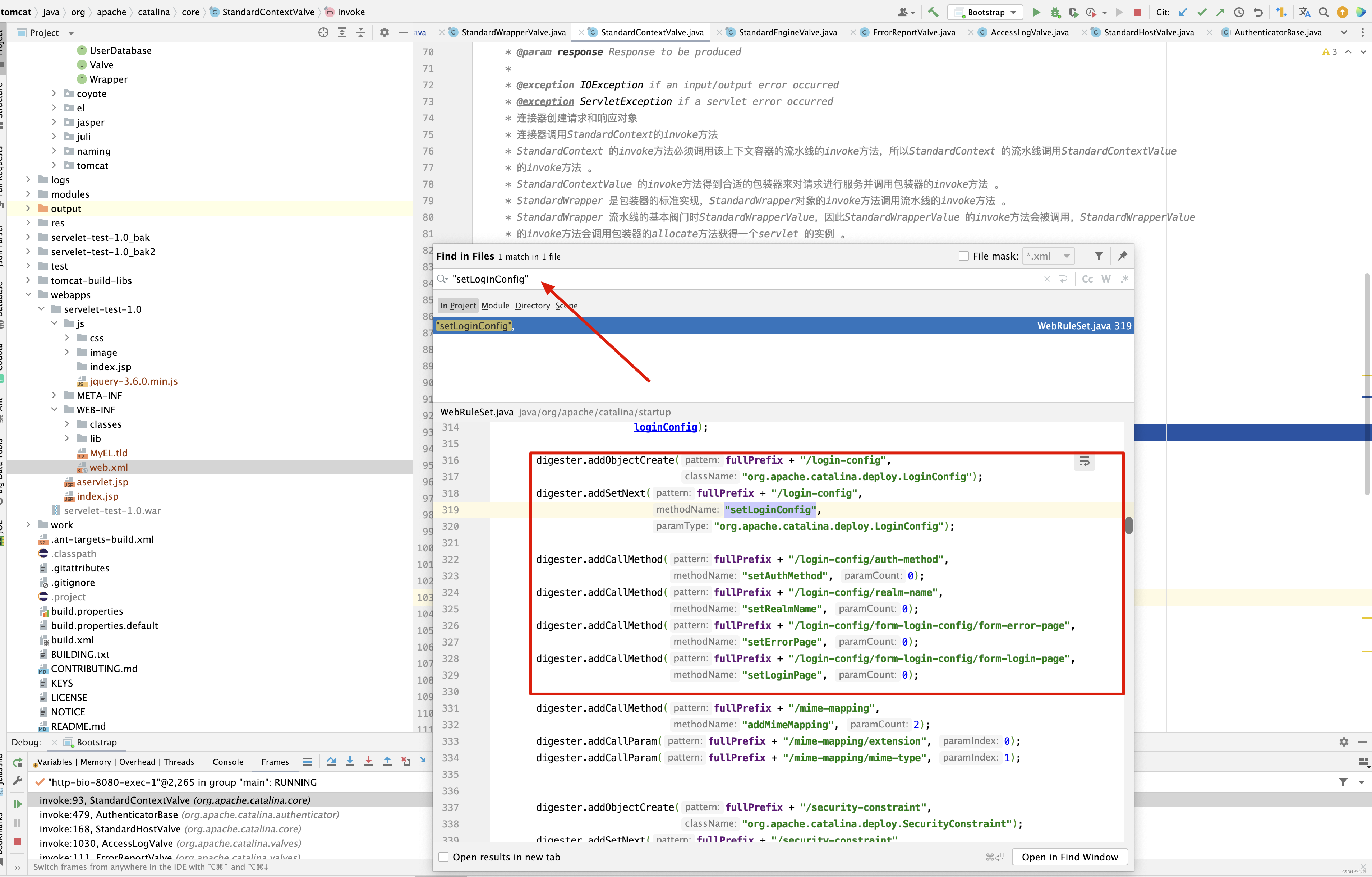
终于找到了login-config的配置,本例中只配置了auth-method,还可以倒置realm-name, form-login-config/form-error-page, form-login-config/form-login-page等信息。 接下来分析StandardContextValve类。
StandardContextValve
接下来看StandardContextValve的内部实现
public final void invoke(Request request, Response response)
throws IOException, ServletException {
// Disallow any direct access to resources under WEB-INF or META-INF
// 当然禁止访问META-INF和WEB-INF的内容,如果访问,则抛出404异常
MessageBytes requestPathMB = request.getRequestPathMB();
if ((requestPathMB.startsWithIgnoreCase("/META-INF/", 0))
|| (requestPathMB.equalsIgnoreCase("/META-INF"))
|| (requestPathMB.startsWithIgnoreCase("/WEB-INF/", 0))
|| (requestPathMB.equalsIgnoreCase("/WEB-INF"))) {
response.sendError(HttpServletResponse.SC_NOT_FOUND);
return;
}
// Select the Wrapper to be used for this Request
// 如果Wrapper不存在或者Wrapper不可用,则抛出404异常
Wrapper wrapper = request.getWrapper();
if (wrapper == null || wrapper.isUnavailable()) {
response.sendError(HttpServletResponse.SC_NOT_FOUND);
return;
}
// Acknowledge the request
// 向客户端发送ack事件
try {
response.sendAcknowledgement();
} catch (IOException ioe) {
container.getLogger().error(sm.getString(
"standardContextValve.acknowledgeException"), ioe);
request.setAttribute(RequestDispatcher.ERROR_EXCEPTION, ioe);
// 如果抛出异常,则返回505错误码
response.sendError(HttpServletResponse.SC_INTERNAL_SERVER_ERROR);
return;
}
if (request.isAsyncSupported()) {
request.setAsyncSupported(wrapper.getPipeline().isAsyncSupported());
}
wrapper.getPipeline().getFirst().invoke(request, response);
}
接下来进入StandardWrapperValve的invoke()方法。
StandardWrapperValve
/**
* StandardWrapperValve 是 StandardWrapper 实例上的基本阀门,该阀门做两件 事情:
* 1.提交 Servlet 的所有相关过滤器
* 2.调用发送者的 service 方法要实现这些内容,下面是 StandardWrapperValve 在他的 invoke 方法要实现的:
* 3.调用 StandardWrapper 的 allocate 的方法来获得一个 servlet 实例
* 4.调用它的 private createFilterChain 方法获得过滤链
* 5.调用过滤器链的 doFilter 方法。包括调用 servlet 的 service 方法
* 6.释放过滤器链
* 7.调用包装器的 deallocate 方法
* 8.如果 Servlet 无法使用了,调用包装器的 unload 方法
*/
@Override
public final void invoke(Request request, Response response)
throws IOException, ServletException {
// Initialize local variables we may need
boolean unavailable = false;
Throwable throwable = null;
// This should be a Request attribute...
long t1=System.currentTimeMillis();
requestCount.incrementAndGet();
StandardWrapper wrapper = (StandardWrapper) getContainer(); // 属于哪个Wrapper
Servlet servlet = null;
Context context = (Context) wrapper.getParent(); // 属于哪个Context
// Check for the application being marked unavailable
if (!context.getState().isAvailable()) {
// 如果容器的状态不可用,则返回503
response.sendError(HttpServletResponse.SC_SERVICE_UNAVAILABLE,
sm.getString("standardContext.isUnavailable"));
unavailable = true;
}
// Check for the servlet being marked unavailable
// 如果Context可用,但是Wrapper不可用, 在定义servlet时,可以设置enabled
if (!unavailable && wrapper.isUnavailable()) {
container.getLogger().info(sm.getString("standardWrapper.isUnavailable",
wrapper.getName()));
long available = wrapper.getAvailable();
if ((available > 0L) && (available < Long.MAX_VALUE)) {
response.setDateHeader("Retry-After", available);
response.sendError(HttpServletResponse.SC_SERVICE_UNAVAILABLE,
sm.getString("standardWrapper.isUnavailable",
wrapper.getName()));
} else if (available == Long.MAX_VALUE) {
response.sendError(HttpServletResponse.SC_NOT_FOUND,
sm.getString("standardWrapper.notFound",
wrapper.getName()));
}
unavailable = true;
}
// Allocate a servlet instance to process this request
try {
if (!unavailable) {
// 实例化,初始化servlet
servlet = wrapper.allocate();
}
} catch (UnavailableException e) {
container.getLogger().error(
sm.getString("standardWrapper.allocateException",
wrapper.getName()), e);
long available = wrapper.getAvailable();
if ((available > 0L) && (available < Long.MAX_VALUE)) {
response.setDateHeader("Retry-After", available);
response.sendError(HttpServletResponse.SC_SERVICE_UNAVAILABLE,
sm.getString("standardWrapper.isUnavailable",
wrapper.getName()));
} else if (available == Long.MAX_VALUE) {
response.sendError(HttpServletResponse.SC_NOT_FOUND,
sm.getString("standardWrapper.notFound",
wrapper.getName()));
}
} catch (ServletException e) {
container.getLogger().error(sm.getString("standardWrapper.allocateException",
wrapper.getName()), StandardWrapper.getRootCause(e));
throwable = e;
exception(request, response, e);
} catch (Throwable e) {
ExceptionUtils.handleThrowable(e);
container.getLogger().error(sm.getString("standardWrapper.allocateException",
wrapper.getName()), e);
throwable = e;
exception(request, response, e);
servlet = null;
}
// Identify if the request is Comet related now that the servlet has been allocated
boolean comet = false;
if (servlet instanceof CometProcessor && Boolean.TRUE.equals(request.getAttribute(
Globals.COMET_SUPPORTED_ATTR))) {
comet = true;
request.setComet(true);
}
MessageBytes requestPathMB = request.getRequestPathMB();
DispatcherType dispatcherType = DispatcherType.REQUEST;
if (request.getDispatcherType()==DispatcherType.ASYNC) dispatcherType = DispatcherType.ASYNC;
request.setAttribute(Globals.DISPATCHER_TYPE_ATTR,dispatcherType);
request.setAttribute(Globals.DISPATCHER_REQUEST_PATH_ATTR,
requestPathMB);
// Create the filter chain for this request
ApplicationFilterFactory factory =
ApplicationFilterFactory.getInstance();
// 最重要的方法是 createFilterChain 方法并调用过滤器链的 doFilter 方法。方 法 createFilterChain 创建了一个
// ApplicationFilterChain 实例,并将所有的 过滤器添加到上面。ApplicationFilterChain 类将在下面的小节中介绍。
// 要完 全的理解这个类,还需要理解 FilterDef 和 ApplicationFilterConfig 类。这些 内容将在下面介绍
ApplicationFilterChain filterChain =
factory.createFilterChain(request, wrapper, servlet);
// Reset comet flag value after creating the filter chain
request.setComet(false);
// Call the filter chain for this request
// NOTE: This also calls the servlet's service() method
try {
if ((servlet != null) && (filterChain != null)) {
// Swallow output if needed
if (context.getSwallowOutput()) {
try {
SystemLogHandler.startCapture();
if (request.isAsyncDispatching()) {
request.getAsyncContextInternal().doInternalDispatch();
} else if (comet) {
filterChain.doFilterEvent(request.getEvent());
request.setComet(true);
} else {
filterChain.doFilter(request.getRequest(),
response.getResponse());
}
} finally {
String log = SystemLogHandler.stopCapture();
if (log != null && log.length() > 0) {
context.getLogger().info(log);
}
}
} else {
if (request.isAsyncDispatching()) {
request.getAsyncContextInternal().doInternalDispatch();
} else if (comet) {
request.setComet(true);
filterChain.doFilterEvent(request.getEvent());
} else {
filterChain.doFilter
(request.getRequest(), response.getResponse());
}
}
}
} catch (ClientAbortException e) {
throwable = e;
exception(request, response, e);
} catch (IOException e) {
container.getLogger().error(sm.getString(
"standardWrapper.serviceException", wrapper.getName(),
context.getName()), e);
throwable = e;
exception(request, response, e);
} catch (UnavailableException e) {
container.getLogger().error(sm.getString(
"standardWrapper.serviceException", wrapper.getName(),
context.getName()), e);
// throwable = e;
// exception(request, response, e);
wrapper.unavailable(e);
long available = wrapper.getAvailable();
if ((available > 0L) && (available < Long.MAX_VALUE)) {
response.setDateHeader("Retry-After", available);
response.sendError(HttpServletResponse.SC_SERVICE_UNAVAILABLE,
sm.getString("standardWrapper.isUnavailable",
wrapper.getName()));
} else if (available == Long.MAX_VALUE) {
response.sendError(HttpServletResponse.SC_NOT_FOUND,
sm.getString("standardWrapper.notFound",
wrapper.getName()));
}
// Do not save exception in 'throwable', because we
// do not want to do exception(request, response, e) processing
} catch (ServletException e) {
Throwable rootCause = StandardWrapper.getRootCause(e);
if (!(rootCause instanceof ClientAbortException)) {
container.getLogger().error(sm.getString(
"standardWrapper.serviceExceptionRoot",
wrapper.getName(), context.getName(), e.getMessage()),
rootCause);
}
throwable = e;
exception(request, response, e);
} catch (Throwable e) {
ExceptionUtils.handleThrowable(e);
container.getLogger().error(sm.getString(
"standardWrapper.serviceException", wrapper.getName(),
context.getName()), e);
throwable = e;
exception(request, response, e);
}
// Release the filter chain (if any) for this request
if (filterChain != null) {
if (request.isComet()) {
// If this is a Comet request, then the same chain will be used for the
// processing of all subsequent events.
filterChain.reuse();
} else {
filterChain.release();
}
}
// Deallocate the allocated servlet instance
try {
if (servlet != null) {
wrapper.deallocate(servlet);
}
} catch (Throwable e) {
ExceptionUtils.handleThrowable(e);
container.getLogger().error(sm.getString("standardWrapper.deallocateException",
wrapper.getName()), e);
if (throwable == null) {
throwable = e;
exception(request, response, e);
}
}
// If this servlet has been marked permanently unavailable,
// unload it and release this instance
try {
if ((servlet != null) &&
(wrapper.getAvailable() == Long.MAX_VALUE)) {
wrapper.unload();
}
} catch (Throwable e) {
ExceptionUtils.handleThrowable(e);
container.getLogger().error(sm.getString("standardWrapper.unloadException",
wrapper.getName()), e);
if (throwable == null) {
throwable = e;
exception(request, response, e);
}
}
long t2=System.currentTimeMillis();
long time=t2-t1;
processingTime += time;
if( time > maxTime) maxTime=time;
if( time < minTime) minTime=time;
}
先来看Servlet的实例化初始化方法
public Servlet allocate() throws ServletException {
// If we are currently unloading this servlet, throw an exception
if (unloading) {
throw new ServletException(sm.getString("standardWrapper.unloading", getName()));
}
boolean newInstance = false;
// If not SingleThreadedModel, return the same instance every time
if (!singleThreadModel) {
// Load and initialize our instance if necessary
if (instance == null || !instanceInitialized) {
synchronized (this) {
if (instance == null) {
try {
if (log.isDebugEnabled()) {
log.debug("Allocating non-STM instance");
}
// Note: We don't know if the Servlet implements
// SingleThreadModel until we have loaded it.
// 一个Servlet只有被加载后才能知道是不是实现了SingleThreadModel接口
instance = loadServlet();
newInstance = true;
// 如果没有继承singleThreadModel接口
if (!singleThreadModel) {
// For non-STM, increment here to prevent a race
// condition with unload. Bug 43683, test case
// #3
// 分配实例的次数+1
countAllocated.incrementAndGet();
}
} catch (ServletException e) {
throw e;
} catch (Throwable e) {
ExceptionUtils.handleThrowable(e);
throw new ServletException(sm.getString("standardWrapper.allocate"), e);
}
}
if (!instanceInitialized) {
initServlet(instance);
}
}
}
if (singleThreadModel) {
// 新生成了一个实例后,把实例放入instancePool
if (newInstance) {
// Have to do this outside of the sync above to prevent a
// possible deadlock
synchronized (instancePool) {
instancePool.push(instance);
nInstances++;
}
}
} else {
if (log.isTraceEnabled()) {
log.trace(" Returning non-STM instance");
}
// For new instances, count will have been incremented at the
// time of creation
if (!newInstance) {
// 分配实例的次数加1,如果是新创的实例,在上面就会加1
countAllocated.incrementAndGet();
}
return instance;
}
}
synchronized (instancePool) {
// countAllocated表示当前需要的实例数
// nInstances表示当前已经生成的实例数
// 如果需要的大于或等于存在的实例数,那么则要新生成了,如果已经超过了最大限制,就只能等其他线程释放servlet了
while (countAllocated.get() >= nInstances) {
// Allocate a new instance if possible, or else wait
// 如果现在生成的实例小于最大限制,则继续生成
if (nInstances < maxInstances) {
try {
instancePool.push(loadServlet());
nInstances++;
} catch (ServletException e) {
throw e;
} catch (Throwable e) {
ExceptionUtils.handleThrowable(e);
throw new ServletException(sm.getString("standardWrapper.allocate"), e);
}
} else {
// 否则等等
try {
instancePool.wait();
} catch (InterruptedException e) {
// Ignore
}
}
}
if (log.isTraceEnabled()) {
log.trace(" Returning allocated STM instance");
}
// 分配次数+1,直接从instancePool取
countAllocated.incrementAndGet();
return instancePool.pop();
}
}
Servlet对象池
Servlet在不实现SingleThreadModel的情况下以单例实例模式运行,如图10.3所示,这种情况下,Wrapper容器只通过反射实例化一个Servlet对象,对此,Servlet的所有客户端请求都会共用此Servlet对象,而对于多个客户端请求Tomcat会使用多线程处理,所以要注意保证此Servlet对象的线程安全,多个线程不管执行顺序如何都能保证执行结果的正确性,关于线程安全问题,这里举一个刚做Web开发可能会犯的错误,在某个Servlet使用成员变量累加统计访问次数,这就存在线程安全问题。
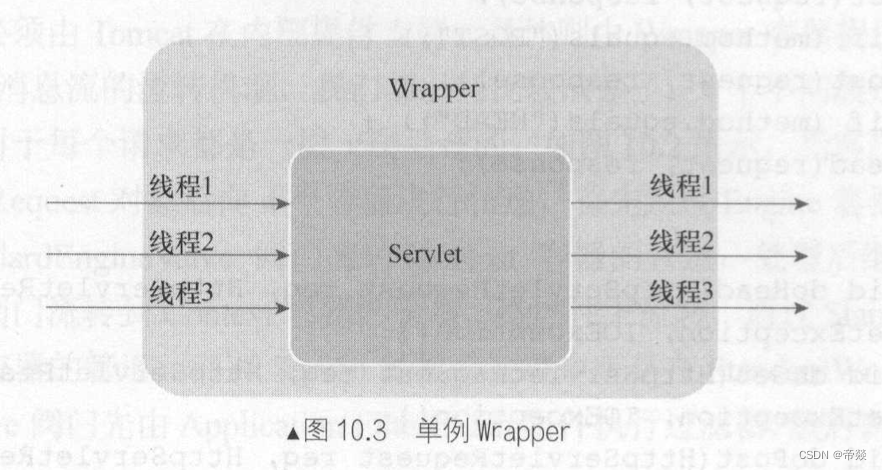
为了支持一个Servlet对象对一个线程,Servlet规范提出了一个SingleThreadModel接口,Tomcat容器必须要完成的机制是, 如果某个Servlet类实现了SingleThreadModel接口,则要保证一个线程独占一个Servlet对象,假如线程1正在使用Servlet1对象,则线程2不能再使用Servlet1对象,只能使用Servlet2对象 。
针对SingleThreadModel模式,Tomcat 的Wrapper 容器使用了对象池策略, Wrapper容器会有一个Servlet堆 ,负责保证若干个Servlet对象,当需要Servlet对象时从堆中pop()出一个对象,而当用完后则push回堆中,Wrapper 容器中最多可以有20个某个Servlet类对象,例如XXXServlet类的对象池, 已有20个线程占用了20个对象,于是第21个线程执行时就会因此阻塞而等待,直至对象池中有可用的对象才继续执行。
整个流程如图10.4所示,某个线程处理客户端请求时,它首先尝试从Servlet对象池中获取Servlet对象,此时如果对象池中可用的对象则直接返回一个对象,如果不够,则使用则继续实例化Servlet对象并push到对象池中, 但Servlet对象的总数量必须保证在20个以内, 如果20个Servlet对象都被其他线程使用了, 那么就必须要等到其他线程用完放回后才能获取,此时该线程会一直等待,从对象池中获取到Servlet对象后则调用Servlet对象的service()方法对客户端请求进行处理,处理完后将Servlet对象放回对象池中。

本节介绍了Servlet对象池, 它是为了支持Servlet规范SingleThreadModel接口而引入的它就是一个栈结构,需要时就pop出一个对象,使用完就push回去,请看下面代码实现 。
@Override
public void deallocate(Servlet servlet) throws ServletException {
// If not SingleThreadModel, no action is required
if (!singleThreadModel) {
// 分配次数-1
countAllocated.decrementAndGet();
return;
}
// Unlock and free this instance
synchronized (instancePool) {
// 分配次数-1,
countAllocated.decrementAndGet();
instancePool.push(servlet);
instancePool.notify();
}
}
public synchronized Servlet loadServlet() throws ServletException {
if (unloading) {
throw new ServletException(
sm.getString("standardWrapper.unloading", getName()));
}
// Nothing to do if we already have an instance or an instance pool
if (!singleThreadModel && (instance != null))
return instance;
PrintStream out = System.out;
if (swallowOutput) {
SystemLogHandler.startCapture();
}
Servlet servlet;
try {
long t1=System.currentTimeMillis();
// Complain if no servlet class has been specified
if (servletClass == null) {
unavailable(null);
throw new ServletException
(sm.getString("standardWrapper.notClass", getName()));
}
InstanceManager instanceManager = ((StandardContext)getParent()).getInstanceManager();
try {
// 有了类加载器和要加载的 Servlet 名字,就可以使用 loadServlet 方法来加载类 了。
// 1. 创建Servlet实例,如果添加了JNDI 注解,将进行依赖注入
servlet = (Servlet) instanceManager.newInstance(servletClass);
} catch (ClassCastException e) {
unavailable(null);
// Restore the context ClassLoader
throw new ServletException
(sm.getString("standardWrapper.notServlet", servletClass), e);
} catch (Throwable e) {
e = ExceptionUtils.unwrapInvocationTargetException(e);
ExceptionUtils.handleThrowable(e);
unavailable(null);
// Added extra log statement for Bugzilla 36630:
// https://bz.apache.org/bugzilla/show_bug.cgi?id=36630
if(log.isDebugEnabled()) {
log.debug(sm.getString("standardWrapper.instantiate", servletClass), e);
}
// Restore the context ClassLoader
throw new ServletException
(sm.getString("standardWrapper.instantiate", servletClass), e);
}
if (multipartConfigElement == null) {
// 2. 读取javax.servlet.annotation.MultipartConfig配置,以用于multipart/form-data请求处理,包括临时文件存储路径 。
// 上传文件最大字节数,请求最大字节数,文件大小阈值。
MultipartConfig annotation =
servlet.getClass().getAnnotation(MultipartConfig.class);
if (annotation != null) {
multipartConfigElement =
new MultipartConfigElement(annotation);
}
}
// Special handling for ContainerServlet instances
// 如果通过了安全性检查,接下来检查该 Servlet 是否是一个 ContainerServlet。 ContainerServlet 是实现了 org.apache.catalina.ContainerServlet
// 接口的 Servlet,它可以访问 Catalina 的内部函数。如果该 Servlet 是 ContainerServlet,loadServlet 方法调用 ContainerServlet 的 setWrapper
// 方法,传递该 StandardWrapper 实例。
if ((servlet instanceof ContainerServlet) &&
// isContainerProvidedServlet 方法返回 true 值。classLoader 会获得另一个 ClassLoader 的实例,这样就可以访问 Catalina 的内部了。
(isContainerProvidedServlet(servletClass) ||
((Context) getParent()).getPrivileged() )) {
((ContainerServlet) servlet).setWrapper(this);
}
classLoadTime=(int) (System.currentTimeMillis() -t1);
// 实现了SingleThreadModel接口
if (servlet instanceof SingleThreadModel) {
if (instancePool == null) {
instancePool = new Stack<Servlet>();
}
singleThreadModel = true;
}
// 4. 初始化servlet
initServlet(servlet);
fireContainerEvent("load", this);
loadTime=System.currentTimeMillis() -t1;
} finally {
if (swallowOutput) {
String log = SystemLogHandler.stopCapture();
if (log != null && log.length() > 0) {
if (getServletContext() != null) {
getServletContext().log(log);
} else {
out.println(log);
}
}
}
}
return servlet;
}
加载Servlet代码分为4步。
- 反射实例化Servlet。
- MultipartConfig注解处理
- 如果实现了ContainerServlet,则设置其Wrapper为this
- 初始化Servlet
其实上面代码中通过实现管理器servlet = (Servlet) instanceManager.newInstance(servletClass); 这一行代码虽然内部是通过反射实现servletClass的实例化。
public Object newInstance(String className) throws IllegalAccessException,
InvocationTargetException, NamingException, InstantiationException,
ClassNotFoundException, IllegalArgumentException, NoSuchMethodException, SecurityException {
Class<?> clazz = loadClassMaybePrivileged(className, classLoader);
return newInstance(clazz.getDeclaredConstructor().newInstance(), clazz);
}
细心的读者肯定会发现,竟然传了一个classLoader,那这个classLoader是什么呢? 在DefaultInstanceManager实例化时,传了了WebappClassLoader,因此在实例化Servlet时,其类加载器为StandardContext的类加载器,也就是WebappClassLoader加载器。 接下来就是initServlet()的实现了。
private synchronized void initServlet(Servlet servlet)
throws ServletException {
if (instanceInitialized && !singleThreadModel) return;
// Call the initialization method of this servlet
try {
// 接下来 loadServlet 方法触发 BEFORE_INIT_EVENT 事件,并调用发送者的 init 方法。
instanceSupport.fireInstanceEvent(InstanceEvent.BEFORE_INIT_EVENT,
servlet);
if( Globals.IS_SECURITY_ENABLED) {
boolean success = false;
try {
Object[] args = new Object[] { facade };
SecurityUtil.doAsPrivilege("init",
servlet,
classType,
args);
success = true;
} finally {
if (!success) {
// destroy() will not be called, thus clear the reference now
SecurityUtil.remove(servlet);
}
}
} else {
//因此,当 StandardWrapper 对象调用 Servlet 实例的 init 方法的时候,它传递 的是一个 StandardWrapperFacade 对象。
// 在 Servlet 内部调用 ServletConfig 的 getServletName, getInitParameter, 和 getInitParameterNames 方法只需
// 要调用它们在 StandardWrapper 的实现就行。
servlet.init(facade);
}
instanceInitialized = true;
instanceSupport.fireInstanceEvent(InstanceEvent.AFTER_INIT_EVENT,
servlet);
} catch (UnavailableException f) {
instanceSupport.fireInstanceEvent(InstanceEvent.AFTER_INIT_EVENT,
servlet, f);
unavailable(f);
throw f;
} catch (ServletException f) {
instanceSupport.fireInstanceEvent(InstanceEvent.AFTER_INIT_EVENT,
servlet, f);
// If the servlet wanted to be unavailable it would have
// said so, so do not call unavailable(null).
throw f;
} catch (Throwable f) {
ExceptionUtils.handleThrowable(f);
getServletContext().log("StandardWrapper.Throwable", f );
instanceSupport.fireInstanceEvent(InstanceEvent.AFTER_INIT_EVENT,
servlet, f);
// If the servlet wanted to be unavailable it would have
// said so, so do not call unavailable(null).
throw new ServletException
(sm.getString("standardWrapper.initException", getName()), f);
}
}
instanceInitialized控制只初始化一次,而Servlet真正的初始化代码在servlet.init(facade);这一行。 其他的都是一些事件处理,因此Servlet在每次创建时都会调用其init()方法,有且仅有一次,在具体分析Servlet的init()方法时,先来看看Servlet的种类。
Servlet种类
根据请求的的资源不同的种类,可以把Servlet分为三种类别,比如请求可能访问一个普通的Servlet,也可能访问一个JSP页面,也可以访问的是一个静态资源,根据对这些不同的类别的处理方式,可以分为三种Servlet,如图10.6所示,一个请求到达Tomcat后将由URI映射器根据请求的URI进行建模, 它会计算出请求发往哪个 Host 容器的哪个Context容器的哪个Wrapper 处理, 在路由的Wrapper 容器时会通过一定的算法选择不同的Servlet进行处理,比如,普通Servlet请求由路由到普通的Servlet,JSP则路由到JspServlet ,而静态资源则路由到DefaultServlet 。
Servlet路径的匹配规则如下
首先,尝试使用精确匹配法匹配精确的类型Servlet 的路径 。
然后,尝试使用前缀匹配通配符类型的Servlet。
接着,尝试使用扩展名匹配通配符类型的Servlet
最后匹配默认的Servlet。
如果一个请求到来,则通过以上规则匹配对应的Servlet,例如请求http://localhost:8080/test 精确匹配<url-pattern>test</url-pattern>的Servlet ,而http://localhost:8080/test.jsp,则会匹配<url-pattern>*.jsp</url-pattern> 的JspServlet ,下面分别讨论三种不同的Servlet 。
- 普通Servlet
普通Servlet就是我们最常见的Servlet,做Web开发都会涉及Servlet,要处理业务逻辑就会自己定义Servlet进行处理, 这就是普通的Servlet,编写好后Servlet通过配置web.xml文件就可以完成部署。 配置格式如下。
<servlet>
<servlet-name>my</servlet-name>
<servlet-class>com.example.servelettest.HelloServlet</servlet-class>
</servlet>
<servlet-mapping>
<servlet-name>my</servlet-name>
<url-pattern>/test</url-pattern>
</servlet-mapping>
- JspServlet
Web应用开发人员一般对这个Servlet比较陌生,因为他们不会直接与它打交道,既然是Servlet,那么肯定要声明后才被部署使用, 它被部署到Tomcat的安装目录下conf目录下的web.xml文件中,这里的web.xml文件是Tomcat的全局Web描述文件,JspServlet的配置如下 。
<servlet>
<servlet-name>jsp</servlet-name>
<servlet-class>org.apache.jasper.servlet.JspServlet</servlet-class>
<init-param>
<param-name>fork</param-name>
<param-value>false</param-value>
</init-param>
<init-param>
<param-name>xpoweredBy</param-name>
<param-value>false</param-value>
</init-param>
<init-param>
<param-name>trimSpaces</param-name>
<param-value>false</param-value>
</init-param>
<load-on-startup>3</load-on-startup>
</servlet>
<servlet-mapping>
<servlet-name>jsp</servlet-name>
<url-pattern>*.jsp</url-pattern>
<url-pattern>*.jspx</url-pattern>
</servlet-mapping>
可以看到,所以以.jsp 和.jspx 结尾的请求都会被JspServlet处理,它包揽了所有的JSP页面的处理, 我们知道JSP页面最终也是会被Tomcat 编译成相应的Servlet,如果想看详细的编译过程,请看之前的博客 Tomcat 源码解析一JSP编译器Jasper-佛怒火莲 系列, 而这些Servlet的处理都次给了JspServlet 。
JspServlet处理逻辑大致如下 。
a) 判断是不是第一次访问Servlet,如果是,则会先编译JSP页面,殷富一定的包和类名规则生成相应的Servlet类。
b) 加载刚刚编译好的JSP Serlvet类,并初始化它们
c) 调用刚刚加载好的JSP Servlet的service方法,处理请求。
至此完成了JSP页面的请求。
- DefaultServlet
同样是Tomcat内部使用的一个Servlet ,DefaultServlet是Tomcat专门提供用于处理静态资源的Servlet,它同样被部署到Tomcat安装目录下的conf目录下的web.xml文件中,DefaultServlet的配置如下 。
<servlet>
<servlet-name>default</servlet-name>
<servlet-class>org.apache.catalina.servlets.DefaultServlet</servlet-class>
<init-param>
<param-name>debug</param-name>
<param-value>0</param-value>
</init-param>
<init-param>
<param-name>listings</param-name>
<!--<param-value>false</param-value> -->
<param-value>true</param-value>
</init-param>
<load-on-startup>1</load-on-startup>
</servlet>
<servlet-mapping>
<servlet-name>default</servlet-name>
<url-pattern>/</url-pattern>
</servlet-mapping>
可以看到所有的URI请求都会被匹配,但由于 Mapper组件匹配Servlet时将DefaultServlet放到最后才匹配,所以它并不会把所有的请求都拦截下来, 只有那些经过精确匹配,前缀匹配,扩展名匹配等还没有匹配上的,才会留给DefaultServlet,DefaultServlet通过JNDI根据URI在tomcat内部查找资源,然后以该资源响应客户端 。
首先来看DefaultServlet的初始化。在之前的博客也分析过这一块。 Tomcat 源码解析一容器加载-大寂灭指(下),但今天继续回顾一下。在DefaultServlet的init()中打一个断点。启动Tomcat

先看是哪里调用了DefaultServlet的初始化方法。

从调用链中得知,是StandardContext在启动时调用了所有子容器的load()方法。

进而调用了servlet.init(facade);方法,但StandardWrapper中,facade的默认值为StandardWrapperFacade facade = new StandardWrapperFacade(this); 而this就是StandardWrapper。

getServletConfig()事实上就是StandardWrapper
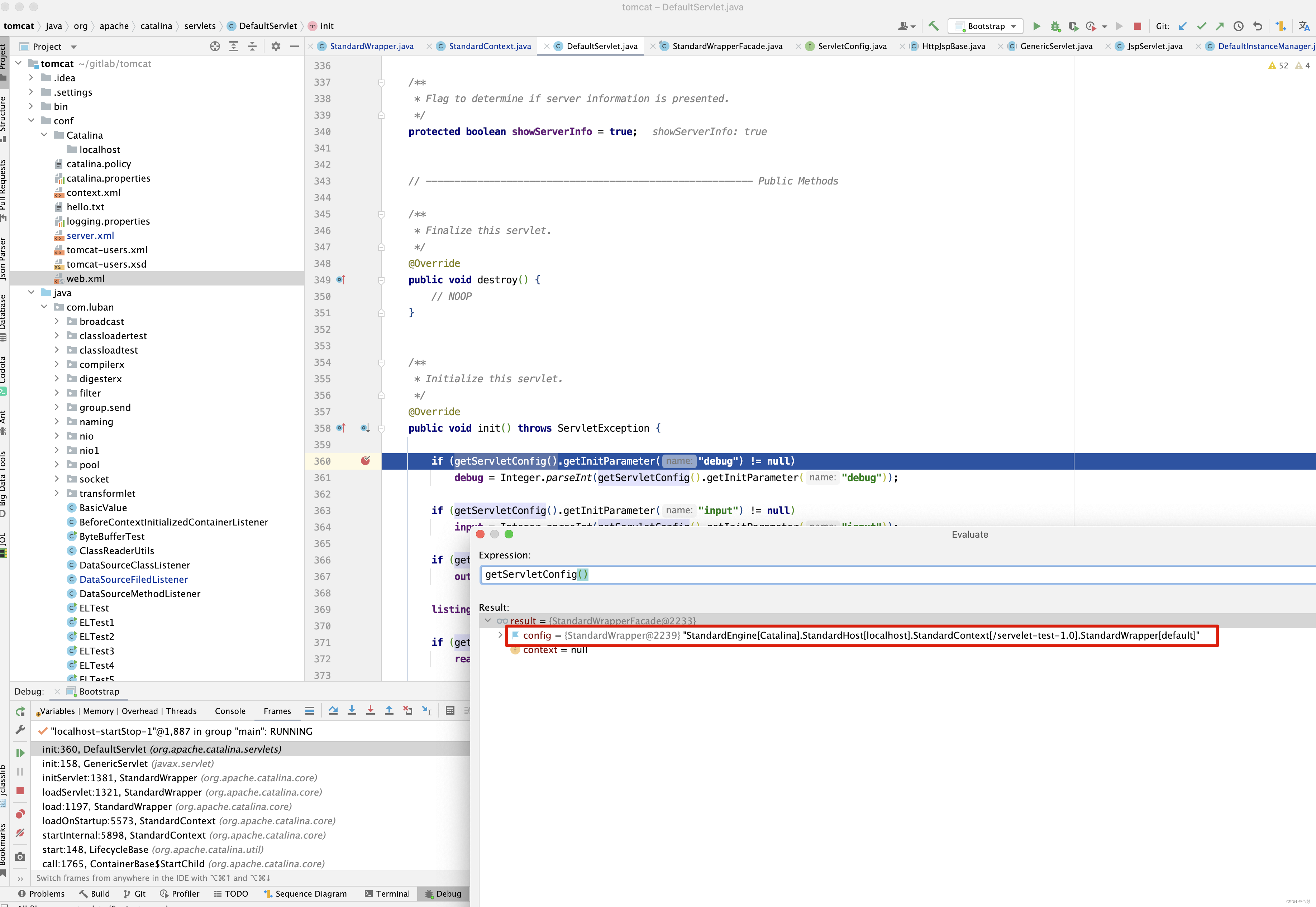
而里面的这些参数配置默认来源于catalina.base/conf/web.xml
<servlet>
<servlet-name>default</servlet-name>
<servlet-class>org.apache.catalina.servlets.DefaultServlet</servlet-class>
<init-param>
<param-name>debug</param-name>
<param-value>0</param-value>
</init-param>
<init-param>
<param-name>listings</param-name>
<param-value>true</param-value>
</init-param>
<load-on-startup>1</load-on-startup>
</servlet>
先不分析这些参数有什么作用,后面使用到再来分析。
接下来看JspServlet的初始化。 同样JspServlet也是在StandardContext启动时进行初始化。

public void init(ServletConfig config) throws ServletException {
super.init(config);
this.config = config;
this.context = config.getServletContext();
// Initialize the JSP Runtime Context
// Check for a custom Options implementation
// 允许指定的类来配置 Jasper。如果没有指定,则使用默认的 Servlet 内置参数(EmbeddedServletOptions)。
String engineOptionsName = config.getInitParameter("engineOptionsClass");
if (Constants.IS_SECURITY_ENABLED && engineOptionsName != null) {
log.info(Localizer.getMessage(
"jsp.info.ignoreSetting", "engineOptionsClass", engineOptionsName));
engineOptionsName = null;
}
if (engineOptionsName != null) {
// Instantiate the indicated Options implementation
try {
ClassLoader loader = Thread.currentThread().getContextClassLoader();
Class<?> engineOptionsClass = loader.loadClass(engineOptionsName);
Class<?>[] ctorSig = { ServletConfig.class, ServletContext.class };
Constructor<?> ctor = engineOptionsClass.getConstructor(ctorSig);
Object[] args = { config, context };
options = (Options) ctor.newInstance(args);
} catch (Throwable e) {
e = ExceptionUtils.unwrapInvocationTargetException(e);
ExceptionUtils.handleThrowable(e);
// Need to localize this.
log.warn("Failed to load engineOptionsClass", e);
// Use the default Options implementation
options = new EmbeddedServletOptions(config, context);
}
} else {
// Use the default Options implementation
options = new EmbeddedServletOptions(config, context);
}
rctxt = new JspRuntimeContext(context, options);
if (config.getInitParameter("jspFile") != null) {
jspFile = config.getInitParameter("jspFile");
try {
if (null == context.getResource(jspFile)) {
throw new ServletException("missing jspFile: [" + jspFile + "]");
}
} catch (MalformedURLException e) {
throw new ServletException("Can not locate jsp file", e);
}
try {
if (SecurityUtil.isPackageProtectionEnabled()){
AccessController.doPrivileged(new PrivilegedExceptionAction<Object>(){
@Override
public Object run() throws IOException, ServletException {
serviceJspFile(null, null, jspFile, true);
return null;
}
});
} else {
serviceJspFile(null, null, jspFile, true);
}
} catch (IOException e) {
throw new ServletException("Could not precompile jsp: " + jspFile, e);
} catch (PrivilegedActionException e) {
Throwable t = e.getCause();
if (t instanceof ServletException) throw (ServletException)t;
throw new ServletException("Could not precompile jsp: " + jspFile, e);
}
}
if (log.isDebugEnabled()) {
log.debug(Localizer.getMessage("jsp.message.scratch.dir.is",
options.getScratchDir().toString()));
log.debug(Localizer.getMessage("jsp.message.dont.modify.servlets"));
}
}
我们可以在jsp的init-param参数配置
<init-param>
<param-name>engineOptionsClass</param-name>
<param-value>xxx</param-value>
</init-param>
那配置这个参数有何意义呢?其实就是自定义EmbeddedServletOptions对象,那自定义这个对象有什么用呢?先来看EmbeddedServletOptions的构造方法。
public EmbeddedServletOptions(ServletConfig config,
ServletContext context) {
Enumeration<String> enumeration=config.getInitParameterNames();
...
// 是否去掉模板文本中行为和指令间的空格,缺省为false
String trimsp = config.getInitParameter("trimSpaces");
...
this.isPoolingEnabled = true;
// 确定是否共享标签处理器,true 或 false,缺省为 true。
String poolingEnabledParam = config.getInitParameter("enablePooling");
...
// 是否对每个输入行都用一条 print 语句来生成静态内容,以方便调试。true 或 false,缺省为 true。
String mapFile = config.getInitParameter("mappedfile");
...
// 类文件在编译时是否显示调试(debugging)信息? true 或 false,缺省为 true。
String debugInfo = config.getInitParameter("classdebuginfo");
...
// 如果“development”属性为 false 且“checkInterval”大于 0,则使用后台编译。“checkInterval”是查看 JSP 页面(包括其附属文件)
String checkInterval = config.getInitParameter("checkInterval");
...
// 是否让 Jasper 用于开发模式?如果是,检查 JSPs 修改的频率,将通过设置 modificationTestInterval 参数来完成。 true 或 false, 缺省为 true。
String development = config.getInitParameter("development");
if (development != null) {
if (development.equalsIgnoreCase("true")) {
this.development = true;
} else if (development.equalsIgnoreCase("false")) {
this.development = false;
} else {
if (log.isWarnEnabled()) {
log.warn(Localizer.getMessage("jsp.warning.development"));
}
}
}
// 是否禁止 JSR45 调试时生成 SMAP 信息?true 或 false,缺省为 false。
String suppressSmap = config.getInitParameter("suppressSmap");
...
// JSR45 调试的 SMAP 信息是否转存到文件?true 或 false,缺省为 false。当 suppressSmap 为 true 时,该参数为 false。
String dumpSmap = config.getInitParameter("dumpSmap");
...
// 在一个 useBean action 中,当类属性的值不是一个合法的 bean class 时,Jasper 是否抛出异常?true
...
// 当使用标签时,发送给 Internet Explorer 的 class-id 的值。缺省为:8AD9C840-044E-11D1-B3E9-00805F499D93。
...
/*
* scratchdir 当编译 JSP 页面时使用的 scratch 目录。缺省为当前 WEB 应用的工作目录。
*/
String dir = config.getInitParameter("scratchdir");
if (dir != null && Constants.IS_SECURITY_ENABLED) {
log.info(Localizer.getMessage("jsp.info.ignoreSetting", "scratchdir", dir));
dir = null;
}
if (dir != null) {
scratchDir = new File(dir);
} else {
// First try the Servlet 2.2 javax.servlet.context.tempdir property
scratchDir = (File) context.getAttribute(ServletContext.TEMPDIR);
if (scratchDir == null) {
// Not running in a Servlet 2.2 container.
// Try to get the JDK 1.2 java.io.tmpdir property
dir = System.getProperty("java.io.tmpdir");
if (dir != null)
scratchDir = new File(dir);
}
}
...
// 确定生成的 Servlet 是否加上 X-Powered-By 响应头?true 或 false,缺省为 false。
String xpoweredBy = config.getInitParameter("xpoweredBy");
if (xpoweredBy != null) {
if (xpoweredBy.equalsIgnoreCase("true")) {
this.xpoweredBy = true;
} else if (xpoweredBy.equalsIgnoreCase("false")) {
this.xpoweredBy = false;
} else {
if (log.isWarnEnabled()) {
log.warn(Localizer.getMessage("jsp.warning.xpoweredBy"));
}
}
}
// 异常信息中是否包含出错的源代码片段?true 或 false,缺省为 true。
String displaySourceFragment = config.getInitParameter("displaySourceFragment");
...
}
原来解析jsp生成 Servlet的相关配置都在EmbeddedServletOptions中,因此我们也可以自己定义一个类来设置这些配置参数,而不是通过XML配置文件。
接下来看另外一个问题,我们可以在初始化参数中配置jspFile,这个用意是什么呢?例如。
<servlet>
<servlet-name>jsp</servlet-name>
<servlet-class>org.apache.jasper.servlet.JspServlet</servlet-class>
...
<init-param>
<param-name>jspFile</param-name>
<param-value>aservlet.jsp</param-value>
</init-param>
<load-on-startup>3</load-on-startup>
</servlet>
在启动StandardContext时,也就是在初始化JspServlet时,会将aservlet.jsp这个文件解析编译成Servlet,并加载到内存中,当Tomcat提供服务时,就省去了解析和编译和生成Servlet的步骤,因此就不会出现第一次访问这个jsp文件时感到慢的情况。当然啦,最重要的还是serviceJspFile()这个方法 ,在之前的博客中 已经对jsp 的解析编译,生成Servlet 等做了详细的分析,有兴趣可以自行去研究 Tomcat 源码解析一JSP编译器Jasper-佛怒火莲(上)这一篇博客 。
而普通的Servlet就是我们自己定义的Servlet,只要实现了init()方法,在Servlet创建时,会调用其init()方法初始化。
在StandardWrapperValve的invoke()方法中,还有另外一情况需要考虑。 Servlet不仅支持同步,还支持异步,因此先来看Servlet异步模式支持。
Comet 模式的支持
Comet模式是一种服务器端的推送技术,它的核心思想提供了一种能让服务器往客户端发送数据的方式,Comet模式为什么会出现,风开始人们在客户端通过不断的自动刷新整个页面更新数据,后来觉得体验不好, 又使用了Javax不断的从客户端轮询服务器以更新数据,然后使用Comet模式由服务器端通过长链接推送数据,Comet模式能大大的减少发送到服务器端的请求,从而避免了很多的开销, 而且它还具备了更好的实时性。
如图10.7所示,客户端发送一个请求到服务器,服务器接收到连接后, 一直保持着连接不关闭, 接着,客户端发送一个操作报文告诉服务器做什么操作,服务器处理完事件1后会给客户端响应,然后,处理完事件2后又会给客户端响应,接着,客户端继续发送操作报文给服务器,服务器再进行响应。

一般Comet模式需要NIO配合,而在BIO 中无法使用Commet 模式,在Tomcat内部集成Comet模式的思路比较清晰,引入了一个CometProcessor接口,此接口只有一个event方法,具体的接口代码如下 。
public interface CometProcessor extends Servlet{
/**
* Process the given Comet event.
*
* @param event The Comet event that will be processed
* @throws IOException
* @throws ServletException
*/
public void event(CometEvent event)
throws IOException, ServletException;
}
而CometEvent则表示Comet相关的事件,它包含了BEGIN,READ,END,ERROR四个事件,其含义分别如下。
- BEGIN ,表示请求开始,此时客户端连接已经被接收 。
- READ ,表示客户端连接已经建立,可以读取数据了,读取过程不会阻塞 。
- END 表示请求结束,此时客户端连接将断开
- ERROR ,表示发生了I/O异常,一般将会结束此次请求并且连接断开 。
请看一个例子。
public class CometServlet extends HttpServlet implements CometProcessor {
protected ArrayList connections = new ArrayList();
@Override
public void event(CometEvent event) throws IOException, ServletException {
HttpServletRequest request = event.getHttpServletRequest();
HttpServletResponse response = event.getHttpServletResponse();
if (event.getEventType() == CometEvent.EventType.BEGIN) {
synchronized (connections) {
connections.add(response);
}
} else if (event.getEventType() == CometEvent.EventType.ERROR) {
synchronized (connections) {
connections.remove(response);
}
} else if (event.getEventType() == CometEvent.EventType.END) {
synchronized (connections) {
connections.remove(response);
}
} else if (event.getEventType() == CometEvent.EventType.READ) {
synchronized (connections) {
InputStream is = request.getInputStream();
byte[] buf = new byte[512];
do {
int n = is.read(buf);
if (n > 0) {
System.out.println(new String(buf, 0, n));
} else if (n < 0) {
return;
}
} while (is.available() > 0);
}
}
}
}
这个例子中只是简单的接收客户端连接而不做任何处理,并且客户端发送过来的数据输出,就很容易理解,在BEGIN事件中接收连接并把响应对象放入到列表中,发生ERROR 或END事件时则将响应对象移除,当发生READ事件时则读取数据并输出 。
有了CometProcessor接口后,Tomcat内部就可以识别Commet模式的Servlet了,我们知道Tomcat对请求的处理是管道模式的, 所以在Wrapper 容器的管道中判断加载的Servlet是否继承了CometProcessor,如果继承则说明是Comet模式,并使用Comet方式处理, 它的处理过程如图10.8所示,录一个客户端连接到来时,被接收器接收后注册到NioChannel队列中,Poller组件不断轮询是否有NioChannel需要处理, 如果有,则调用前面的实例化的Comet模式的Servlet,这里主要用到CometProcessor接口的event方法,Poller会将对应的请求对象,响应对象和事件封装成CometEvent对象并传入event方法,此时即执行event方法的逻辑,完成对不同事件的处理,从而实现Comet模式 。

public ApplicationFilterChain createFilterChain
(ServletRequest request, Wrapper wrapper, Servlet servlet) {
// get the dispatcher type
DispatcherType dispatcher = null;
if (request.getAttribute(Globals.DISPATCHER_TYPE_ATTR) != null) {
dispatcher = (DispatcherType) request.getAttribute(
Globals.DISPATCHER_TYPE_ATTR);
}
String requestPath = null;
Object attribute = request.getAttribute(
Globals.DISPATCHER_REQUEST_PATH_ATTR);
if (attribute != null){
requestPath = attribute.toString();
}
// If there is no servlet to execute, return null
if (servlet == null)
return (null);
boolean comet = false;
// Create and initialize a filter chain object
ApplicationFilterChain filterChain = null;
if (request instanceof Request) {
Request req = (Request) request;
comet = req.isComet();
if (Globals.IS_SECURITY_ENABLED) {
// Security: Do not recycle
filterChain = new ApplicationFilterChain();
if (comet) {
req.setFilterChain(filterChain);
}
} else {
filterChain = (ApplicationFilterChain) req.getFilterChain();
if (filterChain == null) {
filterChain = new ApplicationFilterChain();
req.setFilterChain(filterChain);
}
}
} else {
// Request dispatcher in use
filterChain = new ApplicationFilterChain();
}
filterChain.setServlet(servlet);
filterChain.setSupport
(((StandardWrapper)wrapper).getInstanceSupport());
// Acquire the filter mappings for this Context
StandardContext context = (StandardContext) wrapper.getParent();
FilterMap filterMaps[] = context.findFilterMaps();
// If there are no filter mappings, we are done
// 没有Filter映射关系
if ((filterMaps == null) || (filterMaps.length == 0))
return (filterChain);
// Acquire the information we will need to match filter mappings
String servletName = wrapper.getName();
// Add the relevant path-mapped filters to this filter chain
// 根据servletName找到匹配的filter
for (int i = 0; i < filterMaps.length; i++) {
if (!matchDispatcher(filterMaps[i] ,dispatcher)) {
continue;
}
if (!matchFiltersURL(filterMaps[i], requestPath))
continue;
ApplicationFilterConfig filterConfig = (ApplicationFilterConfig)
context.findFilterConfig(filterMaps[i].getFilterName());
if (filterConfig == null) {
// FIXME - log configuration problem
continue;
}
boolean isCometFilter = false;
if (comet) {
try {
isCometFilter = filterConfig.getFilter() instanceof CometFilter;
} catch (Exception e) {
// Note: The try catch is there because getFilter has a lot of
// declared exceptions. However, the filter is allocated much
// earlier
Throwable t = ExceptionUtils.unwrapInvocationTargetException(e);
ExceptionUtils.handleThrowable(t);
}
if (isCometFilter) {
filterChain.addFilter(filterConfig);
}
} else {
filterChain.addFilter(filterConfig);
}
}
// Add filters that match on servlet name second
for (int i = 0; i < filterMaps.length; i++) {
if (!matchDispatcher(filterMaps[i] ,dispatcher)) {
continue;
}
if (!matchFiltersServlet(filterMaps[i], servletName))
continue;
ApplicationFilterConfig filterConfig = (ApplicationFilterConfig)
context.findFilterConfig(filterMaps[i].getFilterName());
if (filterConfig == null) {
// FIXME - log configuration problem
continue;
}
boolean isCometFilter = false;
if (comet) {
try {
isCometFilter = filterConfig.getFilter() instanceof CometFilter;
} catch (Exception e) {
// Note: The try catch is there because getFilter has a lot of
// declared exceptions. However, the filter is allocated much
// earlier
}
if (isCometFilter) {
filterChain.addFilter(filterConfig);
}
} else {
filterChain.addFilter(filterConfig);
}
}
// Return the completed filter chain
return (filterChain);
}
过滤器链
Context容器的过滤器模块包含了过滤器的相关信息, 过滤器链接的调用的思路其实也很简单,如图10.5 所示,请求通过管道流转到Wrapper 容器管道,经过若干阀门后达到基础阀门StandardWrapperValue ,它将创建一个过滤器链ApplicationFilterChain对象,创建时过滤器链对象做了如下逻辑处理。
- 从Context容器中获取所有过滤器相关的信息
- 通过URL匹配过滤器匹配加入的过滤链中
- 通过Servlet名称匹配过滤器,匹配加入过滤链中。

创建ApplicationFilterChain对象后,StandardWrapperValue将调用它的doFilter方法,它就会开始一个一个的调用过滤器,请求被一层一层的处理,最后才调用Servlet处理,至此,针对某个请求,过滤器链将Context中所有的过滤器中对象的请求的过滤器串联起来 ,实现过滤器的功能 。
先来看看url匹配算法。
public static boolean matchFiltersURL(String testPath, String requestPath) {
if (testPath == null)
return (false);
// Case 1 - Exact Match
if (testPath.equals(requestPath))
return (true);
// Case 2 - Path Match ("/.../*")
if (testPath.equals("/*"))
return (true);
if (testPath.endsWith("/*")) {
if (testPath.regionMatches(0, requestPath, 0,
testPath.length() - 2)) {
// testPath 为 /aaa/*
// requestPath 为 /aaa 的情况
if (requestPath.length() == (testPath.length() - 2)) {
return (true);
// testPath 为 /aaa/*
// requestPath 为 /aaa
} else if ('/' == requestPath.charAt(testPath.length() - 2)) {
return (true);
}
}
return (false);
}
// Case 3 - Extension Match
// 如 testPath = *.jsp, requestPath = /aaa.jsp ,则匹配成功
// 如 testPath = *.jsp, requestPath = /aaa.html 匹配失败
// 如testPath = *.jsp, requestPath = /aaa. 匹配失败
if (testPath.startsWith("*.")) {
int slash = requestPath.lastIndexOf('/');
int period = requestPath.lastIndexOf('.');
if ((slash >= 0) && (period > slash)
&& (period != requestPath.length() - 1)
&& ((requestPath.length() - period)
== (testPath.length() - 1))) {
return (testPath.regionMatches(2, requestPath, period + 1,
testPath.length() - 2));
}
}
// Case 4 - "Default" Match
return (false); // NOTE - Not relevant for selecting filters
}
url 匹配分三种情况,模糊匹配,前缀匹配,后缀匹配,具体情况看注释。
接下来看servlet全称匹配,这就很简单了,如果servletName和过滤器中配置的servletName相等,当前过滤器需要添加到当前Servlet的过滤器链中。
private boolean matchFiltersServlet(FilterMap filterMap,
String servletName) {
if (servletName == null) {
return (false);
}
// Check the specific "*" special servlet name
else if (filterMap.getMatchAllServletNames()) {
return (true);
} else {
String[] servletNames = filterMap.getServletNames();
for (int i = 0; i < servletNames.length; i++) {
if (servletName.equals(servletNames[i])) {
return (true);
}
}
return false;
}
}
接下来就是过滤器链的调用了,过滤器的实现逻辑也很简单,请看下面例子。
public interface IFilter {
public void doFilter(FilterChain filterChain);
}
public class Filter1 implements IFilter{
@Override
public void doFilter(FilterChain filterChain) {
System.out.println("过滤器1执行");
filterChain.doFilter();
}
}
public class Filter2 implements IFilter{
@Override
public void doFilter(FilterChain filterChain) {
System.out.println("过滤器2执行");
filterChain.doFilter();
}
}
public class FilterChain {
public static List<IFilter> filters = new ArrayList<>();
public void addFilter(IFilter filter) {
filters.add(filter);
}
private int index;
public void doFilter() {
if (index > filters.size() - 1) {
System.out.println("过滤器 已经执行完了");
return;
}
filters.get(index++).doFilter(this);
}
public static void main(String[] args) {
Filter1 filter1 = new Filter1();
Filter2 filter2 = new Filter2();
FilterChain filterChain = new FilterChain();
filterChain.addFilter(filter1);
filterChain.addFilter(filter2);
filterChain.doFilter();
}
}
结果输出
过滤器1执行
过滤器2执行
过滤器 已经执行完了
/**
* @exception IOException if an input/output error occurs
* @exception ServletException if a servlet exception occurs
* ApplicationFilterChain 的 doFilter 方法,并将它自己作为第三个参数传递给 它。
* 在他的 doFilter 方法中,一个过滤器可以调用另一个过滤器链的 doFilter 来唤 醒另一个过来出去。这里是一个过滤器的 doFilter 实现的例子
*/
@Override
public void doFilter(ServletRequest request, ServletResponse response)
throws IOException, ServletException {
if( Globals.IS_SECURITY_ENABLED ) {
final ServletRequest req = request;
final ServletResponse res = response;
try {
java.security.AccessController.doPrivileged(
new java.security.PrivilegedExceptionAction<Void>() {
@Override
public Void run()
throws ServletException, IOException {
internalDoFilter(req,res);
return null;
}
}
);
} catch( PrivilegedActionException pe) {
Exception e = pe.getException();
if (e instanceof ServletException)
throw (ServletException) e;
else if (e instanceof IOException)
throw (IOException) e;
else if (e instanceof RuntimeException)
throw (RuntimeException) e;
else
throw new ServletException(e.getMessage(), e);
}
} else {
internalDoFilter(request,response);
}
}
private void internalDoFilter(ServletRequest request,
ServletResponse response)
throws IOException, ServletException {
// Call the next filter if there is one
if (pos < n) {
ApplicationFilterConfig filterConfig = filters[pos++];
Filter filter = null;
try {
filter = filterConfig.getFilter();
support.fireInstanceEvent(InstanceEvent.BEFORE_FILTER_EVENT,
filter, request, response);
if (request.isAsyncSupported() && "false".equalsIgnoreCase(
filterConfig.getFilterDef().getAsyncSupported())) {
request.setAttribute(Globals.ASYNC_SUPPORTED_ATTR,
Boolean.FALSE);
}
if( Globals.IS_SECURITY_ENABLED ) {
final ServletRequest req = request;
final ServletResponse res = response;
Principal principal =
((HttpServletRequest) req).getUserPrincipal();
Object[] args = new Object[]{req, res, this};
SecurityUtil.doAsPrivilege
("doFilter", filter, classType, args, principal);
} else {
// 执行filter的逻辑
// 如你看到的,在 doFilter 方法最后一行,它调用过滤链的 doFilter 方法。如果 该过滤器是过滤链的最后一个过滤器,
// 它叫调用请求的 Servlet 的 service 方法。 如果过滤器没有调用 chain.doFilter,下一个过滤器就不会被调用。
filter.doFilter(request, response, this);
}
support.fireInstanceEvent(InstanceEvent.AFTER_FILTER_EVENT,
filter, request, response);
} catch (IOException e) {
if (filter != null)
support.fireInstanceEvent(InstanceEvent.AFTER_FILTER_EVENT,
filter, request, response, e);
throw e;
} catch (ServletException e) {
if (filter != null)
support.fireInstanceEvent(InstanceEvent.AFTER_FILTER_EVENT,
filter, request, response, e);
throw e;
} catch (RuntimeException e) {
if (filter != null)
support.fireInstanceEvent(InstanceEvent.AFTER_FILTER_EVENT,
filter, request, response, e);
throw e;
} catch (Throwable e) {
e = ExceptionUtils.unwrapInvocationTargetException(e);
ExceptionUtils.handleThrowable(e);
if (filter != null)
support.fireInstanceEvent(InstanceEvent.AFTER_FILTER_EVENT,
filter, request, response, e);
throw new ServletException
(sm.getString("filterChain.filter"), e);
}
return;
}
// We fell off the end of the chain -- call the servlet instance
try {
if (ApplicationDispatcher.WRAP_SAME_OBJECT) {
lastServicedRequest.set(request);
lastServicedResponse.set(response);
}
support.fireInstanceEvent(InstanceEvent.BEFORE_SERVICE_EVENT,
servlet, request, response);
if (request.isAsyncSupported()
&& !support.getWrapper().isAsyncSupported()) {
request.setAttribute(Globals.ASYNC_SUPPORTED_ATTR,
Boolean.FALSE);
}
// Use potentially wrapped request from this point
if ((request instanceof HttpServletRequest) &&
(response instanceof HttpServletResponse)) {
if( Globals.IS_SECURITY_ENABLED ) {
final ServletRequest req = request;
final ServletResponse res = response;
Principal principal =
((HttpServletRequest) req).getUserPrincipal();
Object[] args = new Object[]{req, res};
SecurityUtil.doAsPrivilege("service",
servlet,
classTypeUsedInService,
args,
principal);
} else {
// 执行servlet
servlet.service(request, response);
}
} else {
servlet.service(request, response);
}
support.fireInstanceEvent(InstanceEvent.AFTER_SERVICE_EVENT,
servlet, request, response);
} catch (IOException e) {
support.fireInstanceEvent(InstanceEvent.AFTER_SERVICE_EVENT,
servlet, request, response, e);
throw e;
} catch (ServletException e) {
support.fireInstanceEvent(InstanceEvent.AFTER_SERVICE_EVENT,
servlet, request, response, e);
throw e;
} catch (RuntimeException e) {
support.fireInstanceEvent(InstanceEvent.AFTER_SERVICE_EVENT,
servlet, request, response, e);
throw e;
} catch (Throwable e) {
ExceptionUtils.handleThrowable(e);
support.fireInstanceEvent(InstanceEvent.AFTER_SERVICE_EVENT,
servlet, request, response, e);
throw new ServletException
(sm.getString("filterChain.servlet"), e);
} finally {
if (ApplicationDispatcher.WRAP_SAME_OBJECT) {
lastServicedRequest.set(null);
lastServicedResponse.set(null);
}
}
}
普通的Servlet工作机制
在研究Servlet在Tomcat中工作机制前, 必须先看看Servlet规范的一些重要规定,该规范提供了一个Servlet接口,接口中包含了重要的方法是init,service,destory等方法,Servlet在初始化时要调用init方法,在销毁时要调用destroy方法,而在对客户端请求处理时调用service方法,对于这些机制,都必须由Tomcat在内部提供支持,具体由Wrapper容器提供支持。
对于 Tomcat 中消息流的流转机制,我们已经比较清楚了,4个不同级别的容器是通过管道机制进行流转的, 对于每个请求都是一层一层处理,如图10.2所示,当客户端请求达到服务端后, 请求被抽象成Request 对象后向4个容器进行传递,首先经过Engine容器的管道通过若干阀门,最后通过StandardEngineValve阀门流转到Host容器的管道,处理后继续往下流转,通过StandardContextValve阀门流转到Wrapper 容器的管道,而对Servlet的核心处理也正是StandardWrapperValve阀门中,StandardWrapperValve阀门先由ApplicationFilterChain组件执行过滤器,然后调用Servlet的service()方法进行请求处理,然后对客户端响应。

下面更深入的讨论StandardWrapperValve阀门调用Servlet的过程 , Web应用的Servlet都依据Servlet接口,例如一般我们写业务处理Servlet类都会继承HttpServlet类,为了遵循Servlet规范,它其实最终也实现了Servlet接口,只是HttpServlet定义了HTTP协议的Servlet ,将协议共性的东西抽离出来复用。 Servlet处理客户端请求的核心方法为service方法,所以对于HttpServelt来说,它需要针对HTTP协议的GET,POST,PUT,DELETE, HEAD ,OPTIONS ,TRACE等请求方法做出不同的分发处理,为了方便理解,下面用个简单的代码展示 。
protected void service(HttpServletRequest req, HttpServletResponse resp)
throws ServletException, IOException {
String method = req.getMethod();
if (method.equals(METHOD_GET)) {
long lastModified = getLastModified(req);
if (lastModified == -1) {
// servlet doesn't support if-modified-since, no reason
// to go through further expensive logic
doGet(req, resp);
} else {
long ifModifiedSince;
try {
ifModifiedSince = req.getDateHeader(HEADER_IFMODSINCE);
} catch (IllegalArgumentException iae) {
// Invalid date header - proceed as if none was set
ifModifiedSince = -1;
}
if (ifModifiedSince < (lastModified / 1000 * 1000)) {
// If the servlet mod time is later, call doGet()
// Round down to the nearest second for a proper compare
// A ifModifiedSince of -1 will always be less
maybeSetLastModified(resp, lastModified);
doGet(req, resp);
} else {
resp.setStatus(HttpServletResponse.SC_NOT_MODIFIED);
}
}
} else if (method.equals(METHOD_HEAD)) {
long lastModified = getLastModified(req);
maybeSetLastModified(resp, lastModified);
doHead(req, resp);
} else if (method.equals(METHOD_POST)) {
doPost(req, resp);
} else if (method.equals(METHOD_PUT)) {
doPut(req, resp);
} else if (method.equals(METHOD_DELETE)) {
doDelete(req, resp);
} else if (method.equals(METHOD_OPTIONS)) {
doOptions(req,resp);
} else if (method.equals(METHOD_TRACE)) {
doTrace(req,resp);
} else {
//
// Note that this means NO servlet supports whatever
// method was requested, anywhere on this server.
//
String errMsg = lStrings.getString("http.method_not_implemented");
Object[] errArgs = new Object[1];
errArgs[0] = method;
errMsg = MessageFormat.format(errMsg, errArgs);
resp.sendError(HttpServletResponse.SC_NOT_IMPLEMENTED, errMsg);
}
}
而如果是jsp ,则调用的是HttpJspBase的service()方法 。
public abstract class HttpJspBase extends HttpServlet implements HttpJspPage {
private static final long serialVersionUID = 1L;
protected HttpJspBase() {
}
@Override
public final void init(ServletConfig config)
throws ServletException
{
super.init(config);
jspInit();
_jspInit();
}
@Override
public String getServletInfo() {
return Localizer.getMessage("jsp.engine.info");
}
@Override
public final void destroy() {
jspDestroy();
_jspDestroy();
}
/**
* Entry point into service.
*/
@Override
public final void service(HttpServletRequest request, HttpServletResponse response)
throws ServletException, IOException
{
_jspService(request, response);
}
@Override
public void jspInit() {
}
public void _jspInit() {
}
@Override
public void jspDestroy() {
}
protected void _jspDestroy() {
}
@Override
public abstract void _jspService(HttpServletRequest request,
HttpServletResponse response)
throws ServletException, IOException;
}
看一下index.jsp生成的servlet文件。
public final class index_jsp extends HttpJspBase implements JspSourceDependent {
private static ProtectedFunctionMapper _jspx_fnmap_0 = ProtectedFunctionMapper.getMapForFunction("MyEL:getTestDto", MyEL.class, "getTestDto", new Class[0]);
private static final JspFactory _jspxFactory = JspFactory.getDefaultFactory();
private static Map<String, Long> _jspx_dependants = new HashMap(1);
private volatile ExpressionFactory _el_expressionfactory;
private volatile InstanceManager _jsp_instancemanager;
static {
_jspx_dependants.put("/WEB-INF/MyEL.tld", 1666688090000L);
}
public index_jsp() {
}
public Map<String, Long> getDependants() {
return _jspx_dependants;
}
public ExpressionFactory _jsp_getExpressionFactory() {
if (this._el_expressionfactory == null) {
synchronized(this) {
if (this._el_expressionfactory == null) {
this._el_expressionfactory = _jspxFactory.getJspApplicationContext(this.getServletConfig().getServletContext()).getExpressionFactory();
}
}
}
return this._el_expressionfactory;
}
public InstanceManager _jsp_getInstanceManager() {
if (this._jsp_instancemanager == null) {
synchronized(this) {
if (this._jsp_instancemanager == null) {
this._jsp_instancemanager = InstanceManagerFactory.getInstanceManager(this.getServletConfig());
}
}
}
return this._jsp_instancemanager;
}
public void _jspInit() {
}
public void _jspDestroy() {
}
public void _jspService(HttpServletRequest request, HttpServletResponse response) throws IOException, ServletException {
JspWriter out = null;
JspWriter _jspx_out = null;
PageContext _jspx_page_context = null;
try {
response.setContentType("text/html; charset=UTF-8");
PageContext pageContext = _jspxFactory.getPageContext(this, request, response, (String)null, true, 8192, true);
_jspx_page_context = pageContext;
pageContext.getServletContext();
pageContext.getServletConfig();
pageContext.getSession();
out = pageContext.getOut();
out.write("\n");
out.write("<!-- tld中的uri和short-name -->\n");
out.write("<!DOCTYPE html PUBLIC \"-//W3C//DTD HTML 4.01 Transitional//EN\" \"http://www.w3.org/TR/html4/loose.dtd\">\n");
out.write("<html>\n");
out.write("<head>\n");
out.write(" <meta http-equiv=\"Content-Type\" content=\"text/html; charset=UTF-8\">\n");
out.write(" <title>Insert title here</title>\n");
out.write("</head>\n");
out.write("<body>\n");
out.write("\n");
out.write((String)PageContextImpl.proprietaryEvaluate("${MyEL:getTestDto().getMyUsername(\"小明\") }", String.class, pageContext, _jspx_fnmap_0, false));
out.write("<br>\n");
out.write("\n");
out.write("</body>\n");
out.write("</html>");
} catch (Throwable var13) {
if (!(var13 instanceof SkipPageException)) {
out = (JspWriter)_jspx_out;
if (_jspx_out != null && ((JspWriter)_jspx_out).getBufferSize() != 0) {
try {
if (response.isCommitted()) {
out.flush();
} else {
out.clearBuffer();
}
} catch (IOException var12) {
}
}
if (_jspx_page_context == null) {
throw new ServletException(var13);
}
_jspx_page_context.handlePageException(var13);
}
} finally {
_jspxFactory.releasePageContext(_jspx_page_context);
}
}
}
这个index_jsp.java文件继承了HttpJspBase,并重写了_jspService()方法。因此对于JspServlet的调用,实际上是调用生成的Servlet文件,关于jsp生成servlet的详细细节,请看之前的博客 。
protected void doGet(HttpServletRequest request,
HttpServletResponse response)
throws IOException, ServletException {
// Serve the requested resource, including the data content
serveResource(request, response, true);
}
protected void serveResource(HttpServletRequest request,
HttpServletResponse response,
boolean content)
throws IOException, ServletException {
boolean serveContent = content;
// Identify the requested resource path
String path = getRelativePath(request, true);
if (debug > 0) {
if (serveContent)
log("DefaultServlet.serveResource: Serving resource '" +
path + "' headers and data");
else
log("DefaultServlet.serveResource: Serving resource '" +
path + "' headers only");
}
if (path.length() == 0) {
// Context root redirect
doDirectoryRedirect(request, response);
return;
}
CacheEntry cacheEntry = resources.lookupCache(path);
boolean isError = DispatcherType.ERROR == request.getDispatcherType();
if (!cacheEntry.exists) {
// Check if we're included so we can return the appropriate
// missing resource name in the error
String requestUri = (String) request.getAttribute(
RequestDispatcher.INCLUDE_REQUEST_URI);
if (requestUri == null) {
requestUri = request.getRequestURI();
} else {
// We're included
// SRV.9.3 says we must throw a FNFE
throw new FileNotFoundException(sm.getString(
"defaultServlet.missingResource", requestUri));
}
if (isError) {
response.sendError(((Integer) request.getAttribute(
RequestDispatcher.ERROR_STATUS_CODE)).intValue());
} else {
response.sendError(HttpServletResponse.SC_NOT_FOUND, requestUri);
}
return;
}
// Check if the conditions specified in the optional If headers are
// satisfied.
if (cacheEntry.context == null) {
// Checking If headers
boolean included = (request.getAttribute(
RequestDispatcher.INCLUDE_CONTEXT_PATH) != null);
if (!included && !isError &&
// 每一次前端访问时,会带着这个文件的最后修改时间
// 如果服务器文件没有被修改过,此时直接返回304,这也是一种提升性能的考虑
!checkIfHeaders(request, response, cacheEntry.attributes)) {
return;
}
}
// Find content type.
String contentType = cacheEntry.attributes.getMimeType();
if (contentType == null) {
contentType = getServletContext().getMimeType(cacheEntry.name);
cacheEntry.attributes.setMimeType(contentType);
}
ArrayList<Range> ranges = null;
long contentLength = -1L;
if (cacheEntry.context != null) {
if (!path.endsWith("/")) {
doDirectoryRedirect(request, response);
return;
}
// Skip directory listings if we have been configured to
// suppress them
// 如果前端访问的不是一个文件,而是一个目录时,如果list为false,则不允许访问一个目录,返回404 状态码
if (!listings) {
response.sendError(HttpServletResponse.SC_NOT_FOUND,
request.getRequestURI());
return;
}
contentType = "text/html;charset=UTF-8";
} else {
if (!isError) {
if (useAcceptRanges) {
// Accept ranges header
response.setHeader("Accept-Ranges", "bytes");
}
// Parse range specifier
ranges = parseRange(request, response, cacheEntry.attributes);
// ETag header
response.setHeader("ETag", cacheEntry.attributes.getETag());
// Last-Modified header
response.setHeader("Last-Modified",
cacheEntry.attributes.getLastModifiedHttp());
}
// Get content length
contentLength = cacheEntry.attributes.getContentLength();
// Special case for zero length files, which would cause a
// (silent) ISE when setting the output buffer size
if (contentLength == 0L) {
serveContent = false;
}
}
ServletOutputStream ostream = null;
PrintWriter writer = null;
if (serveContent) {
// Trying to retrieve the servlet output stream
try {
ostream = response.getOutputStream();
} catch (IllegalStateException e) {
// If it fails, we try to get a Writer instead if we're
// trying to serve a text file
if ( (contentType == null)
|| (contentType.startsWith("text"))
|| (contentType.endsWith("xml"))
|| (contentType.contains("/javascript")) ) {
writer = response.getWriter();
// Cannot reliably serve partial content with a Writer
ranges = FULL;
} else {
throw e;
}
}
}
// Check to see if a Filter, Valve or wrapper has written some content.
// If it has, disable range requests and setting of a content length
// since neither can be done reliably.
ServletResponse r = response;
long contentWritten = 0;
while (r instanceof ServletResponseWrapper) {
r = ((ServletResponseWrapper) r).getResponse();
}
if (r instanceof ResponseFacade) {
contentWritten = ((ResponseFacade) r).getContentWritten();
}
if (contentWritten > 0) {
ranges = FULL;
}
if ( (cacheEntry.context != null)
|| isError
|| ( ((ranges == null) || (ranges.isEmpty()))
&& (request.getHeader("Range") == null) )
|| (ranges == FULL) ) {
// Set the appropriate output headers
if (contentType != null) {
if (debug > 0)
log("DefaultServlet.serveFile: contentType='" +
contentType + "'");
response.setContentType(contentType);
}
if ((cacheEntry.resource != null) && (contentLength >= 0)
&& (!serveContent || ostream != null)) {
if (debug > 0)
log("DefaultServlet.serveFile: contentLength=" +
contentLength);
// Don't set a content length if something else has already
// written to the response.
if (contentWritten == 0) {
if (contentLength < Integer.MAX_VALUE) {
response.setContentLength((int) contentLength);
} else {
// Set the content-length as String to be able to use a
// long
response.setHeader("content-length",
"" + contentLength);
}
}
}
InputStream renderResult = null;
if (cacheEntry.context != null) {
if (serveContent) {
// Serve the directory browser
renderResult = render(getPathPrefix(request), cacheEntry);
}
}
// Copy the input stream to our output stream (if requested)
if (serveContent) {
try {
response.setBufferSize(output);
} catch (IllegalStateException e) {
// Silent catch
}
if (ostream != null) {
if (!checkSendfile(request, response, cacheEntry, contentLength, null))
copy(cacheEntry, renderResult, ostream);
} else {
copy(cacheEntry, renderResult, writer);
}
}
} else {
if ((ranges == null) || (ranges.isEmpty()))
return;
// Partial content response.
response.setStatus(HttpServletResponse.SC_PARTIAL_CONTENT);
if (ranges.size() == 1) {
Range range = ranges.get(0);
response.addHeader("Content-Range", "bytes "
+ range.start
+ "-" + range.end + "/"
+ range.length);
long length = range.end - range.start + 1;
if (length < Integer.MAX_VALUE) {
response.setContentLength((int) length);
} else {
// Set the content-length as String to be able to use a long
response.setHeader("content-length", "" + length);
}
if (contentType != null) {
if (debug > 0)
log("DefaultServlet.serveFile: contentType='" +
contentType + "'");
response.setContentType(contentType);
}
if (serveContent) {
try {
response.setBufferSize(output);
} catch (IllegalStateException e) {
// Silent catch
}
if (ostream != null) {
if (!checkSendfile(request, response, cacheEntry, range.end - range.start + 1, range))
copy(cacheEntry, ostream, range);
} else {
// we should not get here
throw new IllegalStateException();
}
}
} else {
response.setContentType("multipart/byteranges; boundary="
+ mimeSeparation);
if (serveContent) {
try {
response.setBufferSize(output);
} catch (IllegalStateException e) {
// Silent catch
}
if (ostream != null) {
copy(cacheEntry, ostream, ranges.iterator(),
contentType);
} else {
// we should not get here
throw new IllegalStateException();
}
}
}
}
}
如果访问的是一个文件,最终经过层层较验,通过copy()方法将文件内容写到前端。
protected void copy(CacheEntry cacheEntry, InputStream is,
ServletOutputStream ostream)
throws IOException {
IOException exception = null;
InputStream resourceInputStream = null;
// Optimization: If the binary content has already been loaded, send
// it directly
if (cacheEntry.resource != null) {
byte buffer[] = cacheEntry.resource.getContent();
if (buffer != null) {
ostream.write(buffer, 0, buffer.length);
return;
}
resourceInputStream = cacheEntry.resource.streamContent();
} else {
resourceInputStream = is;
}
InputStream istream = new BufferedInputStream
(resourceInputStream, input);
// Copy the input stream to the output stream
exception = copyRange(istream, ostream);
// Clean up the input stream
istream.close();
// Rethrow any exception that has occurred
if (exception != null)
throw exception;
}
protected IOException copyRange(InputStream istream,
ServletOutputStream ostream) {
// Copy the input stream to the output stream
IOException exception = null;
byte buffer[] = new byte[input];
int len = buffer.length;
while (true) {
try {
len = istream.read(buffer);
if (len == -1)
break;
ostream.write(buffer, 0, len);
} catch (IOException e) {
exception = e;
len = -1;
break;
}
}
return exception;
}
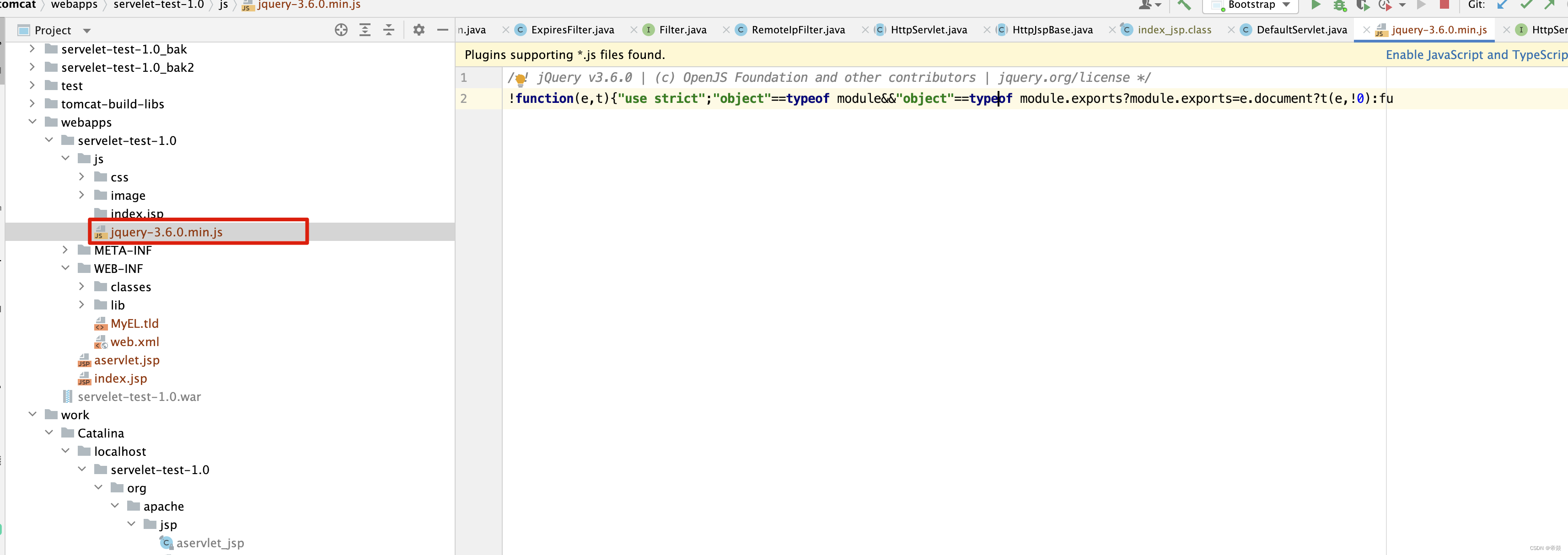
访问效果如下

如果访问的是一个目录时
protected InputStream render(String contextPath, CacheEntry cacheEntry)
throws IOException, ServletException {
Source xsltSource = findXsltInputStream(cacheEntry.context);
if (xsltSource == null) {
return renderHtml(contextPath, cacheEntry);
}
return renderXml(contextPath, cacheEntry, xsltSource);
}
protected InputStream renderHtml(String contextPath, CacheEntry cacheEntry)
throws IOException, ServletException {
String name = cacheEntry.name;
// Prepare a writer to a buffered area
ByteArrayOutputStream stream = new ByteArrayOutputStream();
OutputStreamWriter osWriter = new OutputStreamWriter(stream, "UTF-8");
PrintWriter writer = new PrintWriter(osWriter);
StringBuilder sb = new StringBuilder();
// rewriteUrl(contextPath) is expensive. cache result for later reuse
String rewrittenContextPath = rewriteUrl(contextPath);
// Render the page header
sb.append("<html>\r\n");
sb.append("<head>\r\n");
sb.append("<title>");
sb.append(sm.getString("directory.title", name));
sb.append("</title>\r\n");
sb.append("<STYLE><!--");
sb.append(org.apache.catalina.util.TomcatCSS.TOMCAT_CSS);
sb.append("--></STYLE> ");
sb.append("</head>\r\n");
sb.append("<body>");
sb.append("<h1>");
sb.append(sm.getString("directory.title", name));
// Render the link to our parent (if required)
String parentDirectory = name;
if (parentDirectory.endsWith("/")) {
parentDirectory =
parentDirectory.substring(0, parentDirectory.length() - 1);
}
int slash = parentDirectory.lastIndexOf('/');
if (slash >= 0) {
String parent = name.substring(0, slash);
sb.append(" - <a href=\"");
sb.append(rewrittenContextPath);
if (parent.equals(""))
parent = "/";
sb.append(rewriteUrl(parent));
if (!parent.endsWith("/"))
sb.append("/");
sb.append("\">");
sb.append("<b>");
sb.append(sm.getString("directory.parent", parent));
sb.append("</b>");
sb.append("</a>");
}
sb.append("</h1>");
sb.append("<HR size=\"1\" noshade=\"noshade\">");
sb.append("<table width=\"100%\" cellspacing=\"0\"" +
" cellpadding=\"5\" align=\"center\">\r\n");
// Render the column headings
sb.append("<tr>\r\n");
sb.append("<td align=\"left\"><font size=\"+1\"><strong>");
sb.append(sm.getString("directory.filename"));
sb.append("</strong></font></td>\r\n");
sb.append("<td align=\"center\"><font size=\"+1\"><strong>");
sb.append(sm.getString("directory.size"));
sb.append("</strong></font></td>\r\n");
sb.append("<td align=\"right\"><font size=\"+1\"><strong>");
sb.append(sm.getString("directory.lastModified"));
sb.append("</strong></font></td>\r\n");
sb.append("</tr>");
try {
// Render the directory entries within this directory
NamingEnumeration<NameClassPair> enumeration =
resources.list(cacheEntry.name);
boolean shade = false;
while (enumeration.hasMoreElements()) {
NameClassPair ncPair = enumeration.nextElement();
String resourceName = ncPair.getName();
String trimmed = resourceName/*.substring(trim)*/;
if (trimmed.equalsIgnoreCase("WEB-INF") ||
trimmed.equalsIgnoreCase("META-INF"))
continue;
CacheEntry childCacheEntry =
resources.lookupCache(cacheEntry.name + resourceName);
if (!childCacheEntry.exists) {
continue;
}
sb.append("<tr");
if (shade)
sb.append(" bgcolor=\"#eeeeee\"");
sb.append(">\r\n");
shade = !shade;
sb.append("<td align=\"left\"> \r\n");
sb.append("<a href=\"");
sb.append(rewrittenContextPath);
resourceName = rewriteUrl(name + resourceName);
sb.append(resourceName);
if (childCacheEntry.context != null)
sb.append("/");
sb.append("\"><tt>");
sb.append(RequestUtil.filter(trimmed));
if (childCacheEntry.context != null)
sb.append("/");
sb.append("</tt></a></td>\r\n");
sb.append("<td align=\"right\"><tt>");
if (childCacheEntry.context != null)
sb.append(" ");
else
sb.append(renderSize(childCacheEntry.attributes.getContentLength()));
sb.append("</tt></td>\r\n");
sb.append("<td align=\"right\"><tt>");
sb.append(childCacheEntry.attributes.getLastModifiedHttp());
sb.append("</tt></td>\r\n");
sb.append("</tr>\r\n");
}
} catch (NamingException e) {
// Something went wrong
throw new ServletException("Error accessing resource", e);
}
// Render the page footer
sb.append("</table>\r\n");
sb.append("<HR size=\"1\" noshade=\"noshade\">");
String readme = getReadme(cacheEntry.context);
if (readme!=null) {
sb.append(readme);
sb.append("<HR size=\"1\" noshade=\"noshade\">");
}
if (showServerInfo) {
sb.append("<h3>").append(ServerInfo.getServerInfo()).append("</h3>");
}
sb.append("</body>\r\n");
sb.append("</html>\r\n");
// Return an input stream to the underlying bytes
System.out.println("返回的html:" + sb.toString());
writer.write(sb.toString());
writer.flush();
return new ByteArrayInputStream(stream.toByteArray());
}
当然,如果访问一个目录被允许的话,前提条件是

listing参数为true。
当然访问结果如下
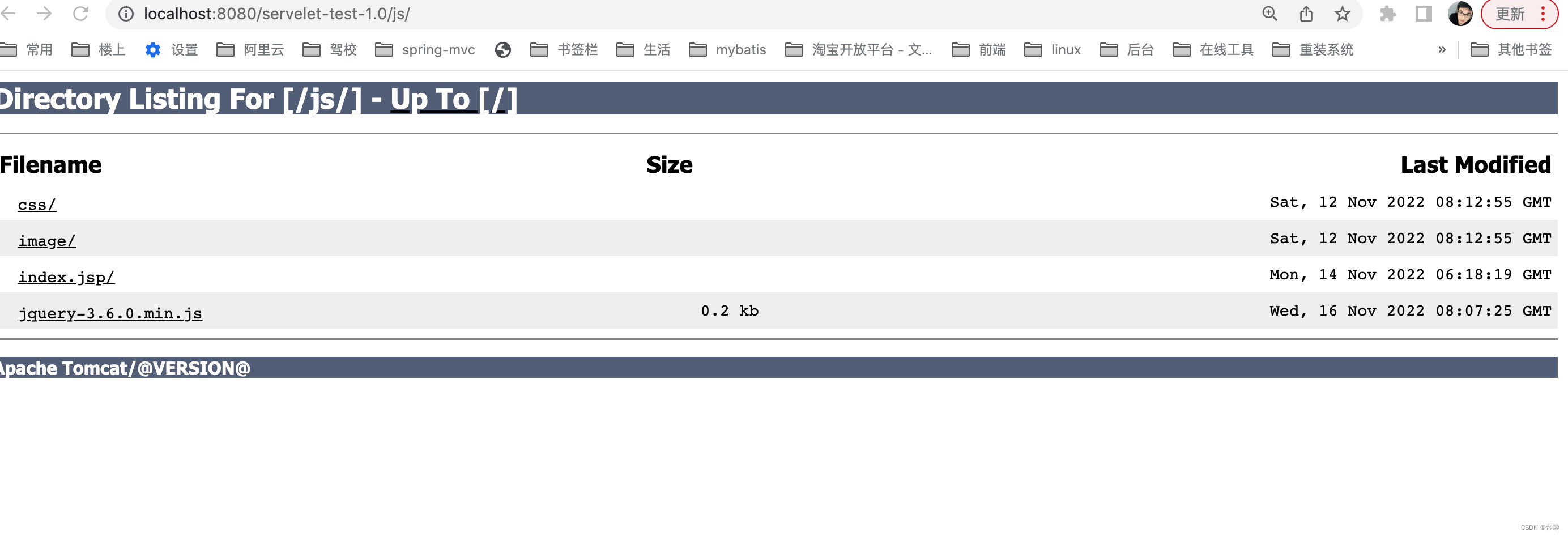
当然JNDI查找文件这一块的内容,可以去看之前的博客Tomcat 源码解析一JNDI
总节:
历时半年,终于将Tomcat的源码过了一遍,当然关于集群,权限这一块没有深入研究,其中的理论知识来源于《Tomcat内核设计剖析》和《Tomcat架构解析.刘光瑞》这两本书,在没有研究Tomcat之前,唯一知道就是怎样用Tomcat,将WAR包放到Tomcat的webapps下,运行start脚本,启动tomcat,到现在,至少我觉得我能去定制化Tomcat了, 刚开始非常痛苦,根本弄不清Tomcat的Server,Engine,Host,Context, Wrapper ,在请求过程中又有管道的流转,Tomcat各种类加载器,都能将你弄晕, 刚开始非常迷茫,之前写了一篇 Tomcat 源码解析一初识 博客,当发现Degister框架时,终于解答了我多年的疑惑,原来xml的解析如此简单,之前解析xml那是一个难受,现在终于找到了XML的解析完美方案,那我觉得Tomcat原来也没有那么难嘛,当写 Tomcat 源码解析一请求处理的整体过程-黄泉天怒 这篇博客时,简直从入门到放弃,里面有太多的东西不知道是什么,也知道管道是什么,不知道StandardContext是什么,又是何时初始化,何时来的呢?因此这篇博客就搁置了,没有办法,既然弄不明白,那就先放弃吧, 后面就先从边边角角的地方去研究,之后先研究了 Tomcat 源码解析一JNDI , Tomcat 源码解析一EL表达式源码解析
Tomcat 源码解析一JSP编译器Jasper-佛怒火莲(上) ,当然将JSP研究明白后,已用时一个多月了,此时发现这些边边角角的东西已经不再是我的羁绊,向Tomcat的核心功能出发,Tomcat 源码解析一容器加载-大寂灭指 系列, 又花了一个多月的时间,当再来看 Tomcat 源码解析一请求处理的整体过程 时,已经是水到渠成的事情,我看网上有一些源码课,老师花几节课就将整个过程讲得差不多了,但那也是老师理解,你依然还是不理解,最多你也只是知道这个现象,当一个牛逼的面试官问你时,你自己都不自信,面试官会信吗?当遇到具体的业务问题时,你依然还是不会,遇到问题还是老办法百度,最终也没有形成自己的思想,如果想自己写一个框架,当然还是无法从Tomcat源码中得到借鉴,当遇到一些问题时,依然无法从源码中找到答案,当然这里还有一个误区,有人说研究懂Spring源码,再去看其他源码就两三个星期就明白了,我个人觉得,如果只是林林散散的看看,那肯定是没有问题的,如果想将博客写出来,并且对里面的细节有一定认知,肯定是不够的,因此在研究源码时,要耐得住枯燥,耐得住寂寞,最好做到没有时间观念,舍得花时间,最终你才会有所收获。
历时半年,Tomcat的源码研究又告一段落了,我得到了什么呢? BIO,NIO的实现,Degister框架,Tomcat中对字节码结构解析,JSP 文件解析生成Servlet的过程,JSP的编译,SMAP修改字节码,EL 表达式的解析,以及EL表达式 从应用中获取值的过程,HostConfig的启动,StandardContext启动过程,管道的设计模式,过滤器的设计模式,Tomcat 热布署思想, JNDI框架的设计及应用,Tomcat中的类加载器等,当然Tomcat的权限,认证,集群,APR 通信方式,目前不做深入研究,因为我觉得目前市面上有很多的集群框架,如Double , Spring Clound 更值得研究,而APR 通信也是Tomcat 内部节点之间的通信,感觉没有太大的借鉴意义,目前放下,说不定以后我觉得他也很重要了,再来写相关博客。
接下来要去研究Netty,希望后面的博客再次相遇。
github相关源码
https://github.com/quyixiao/tomcat.git


